50 Native Arizona Wildflowers and Plants
When you think of Arizona, the desert comes to mind. However, the Grand Canyon State actually provides several diverse habitats for wildflowers. Some of Arizona’s most famous flowers include saguaro cactus blossoms, creosote bushes, and Mojave lupines. In this article, I’ll explore 50 of Arizona’s amazing native wildflowers and plants.

Arizona Native Range & Growing Zones
Most of Arizona experiences an arid desert climate with hot summers and mild winters. However, forest habitats cover just over a quarter of the state. Arizona also contains dry scrubland areas and mountainous regions. Arizona’s native climate corresponds to USDA Hardiness Zones 4b to 10b.
How Are Arizona’s Native Plants Defined?
Arizona’s native plants are defined as species that existed in the area before the arrival of humans. As Native American societies developed in Arizona, they used many native plants as food or medicine. Now, Arizona also contains thousands of non-native species brought by later settlers.
When Are Arizona’s Native Flowering Plants in Season?
Many of Arizona’s wildflowers bloom from late winter to midsummer, usually between late February and June. The best time to see wildflowers in Arizona is in the spring. Arizona’s native wildflower display typically reaches its zenith sometime between March and April.
50 Amazing Native Arizona Wildflowers
1) Apache Plume (Fallugia paradoxa)
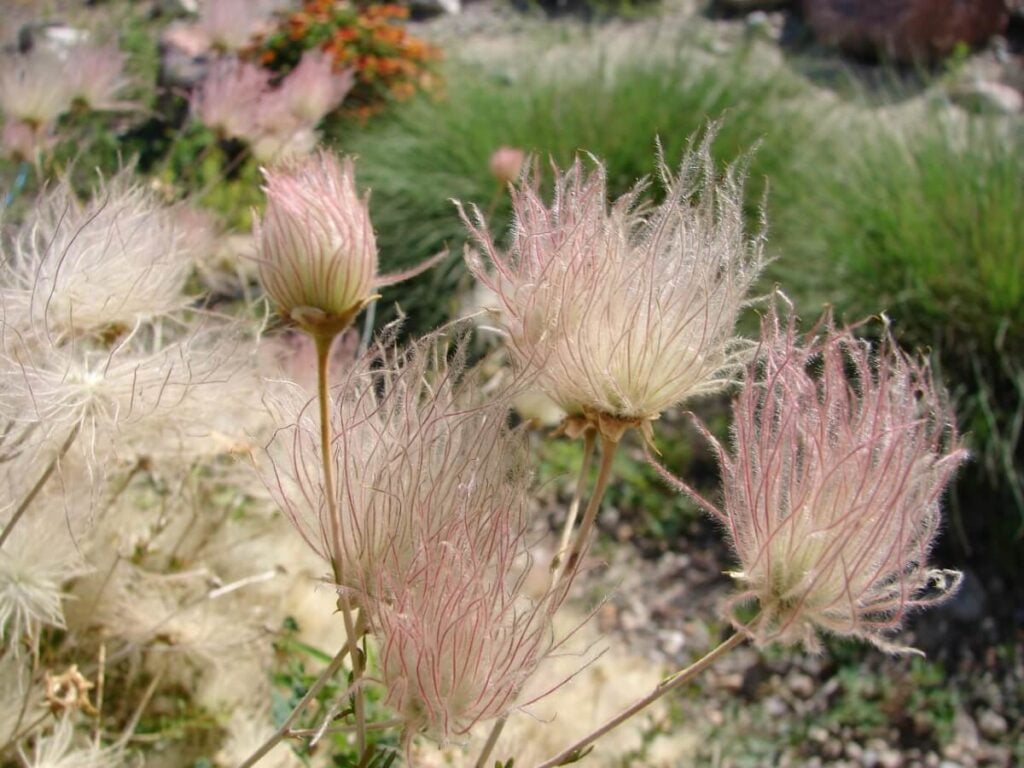
About:
Apache plumes are deciduous shrubs that belong to the rose family (Rosaceae). These upright plants are native to parts of the Southwestern United States and Mexico. Apache plumes have grayish-peeling bark and hairy green leaves.
These drought-tolerant shrubs produce large white flowers from May until December. The flowers are followed by feathery fruits, hence the name. Apache plumes work well as ornamental shrubs in dry or xeric gardens.
2) Arizona Blue-eyes (Evolvulus arizonicus)
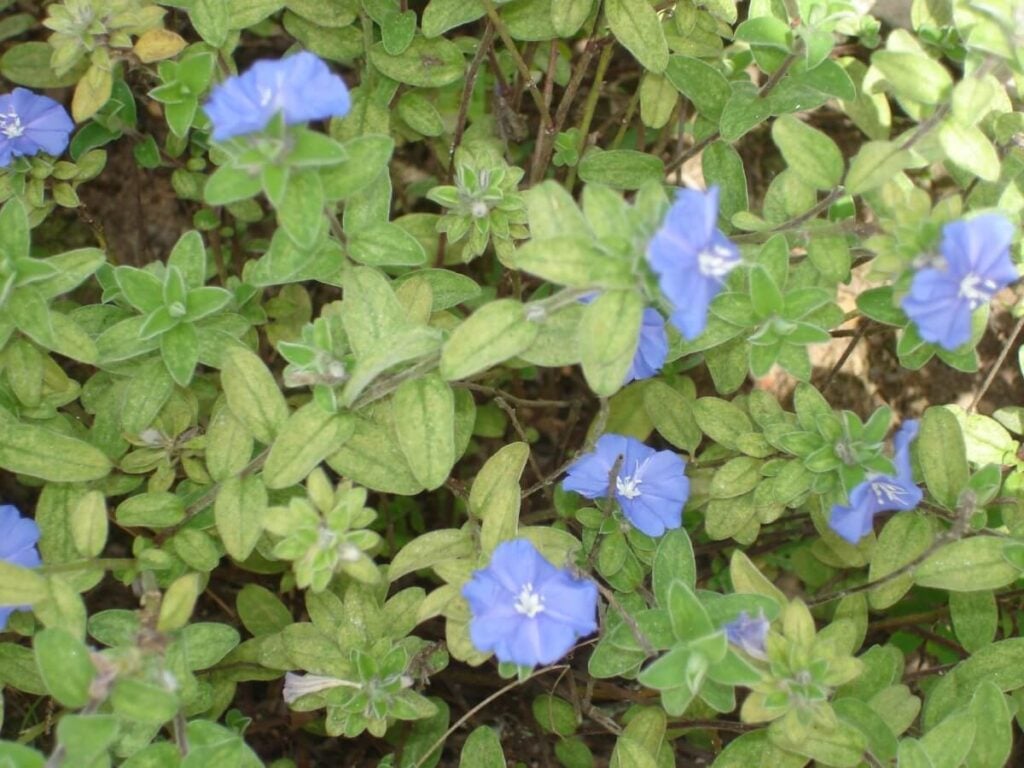
About:
Arizona blue-eyes is a charming herbaceous perennial from the morning glory family (Convolvulaceae). These plants have upright stems and smooth leaves covered in grayish hairs. Arizona blue-eyes flowers produce blue or purple bowl-shaped blooms from spring until fall.
Evolvulus arizonicus is native to parts of Arizona and New Mexico. These perennials thrive in open deserts and arid grasslands. Arizona blue-eyes also have a spreading habit.
3) Arizona Lupine (Lupinus arizonicus)
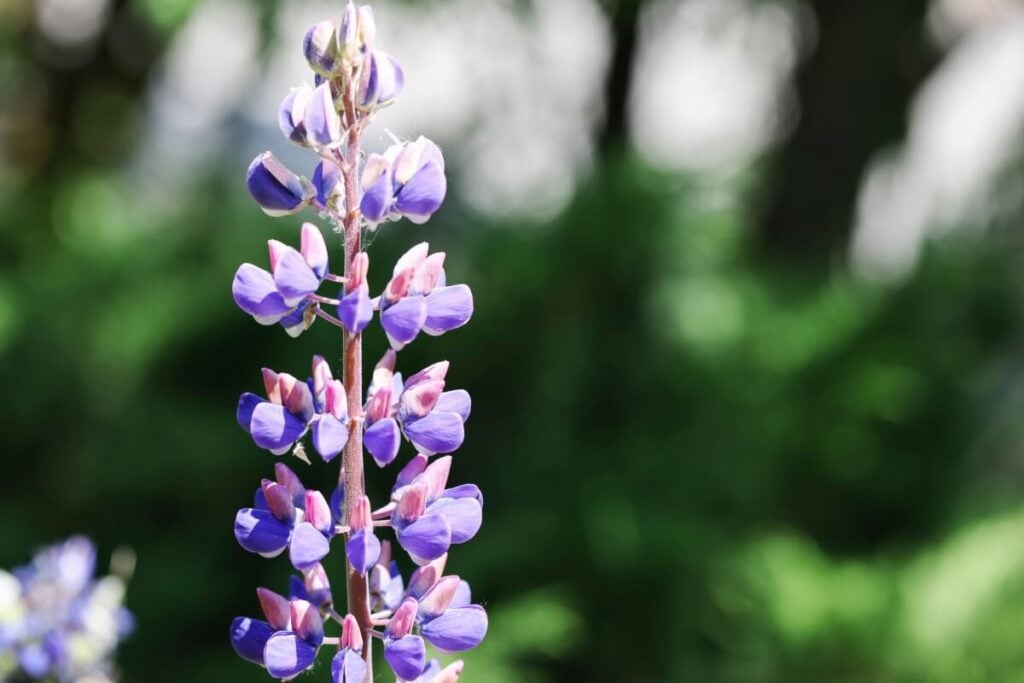
About:
Lupinus arizonicus plants are annuals from the legume or pea family (Fabaceae). These striking lupines have spikes of dark pink or purple pea-like flowers. During late winter to spring, these lupines cover swathes of Arizona’s deserts.
Arizona lupines grow in clumps of compound palmate leaves. Each leaf is divided into approximately six to ten wedge-shaped (cuneate) leaflets. Arizona lupines typically reach heights of up to 20 inches.
4) Arizona Poppy (Kallstroemia grandiflora)
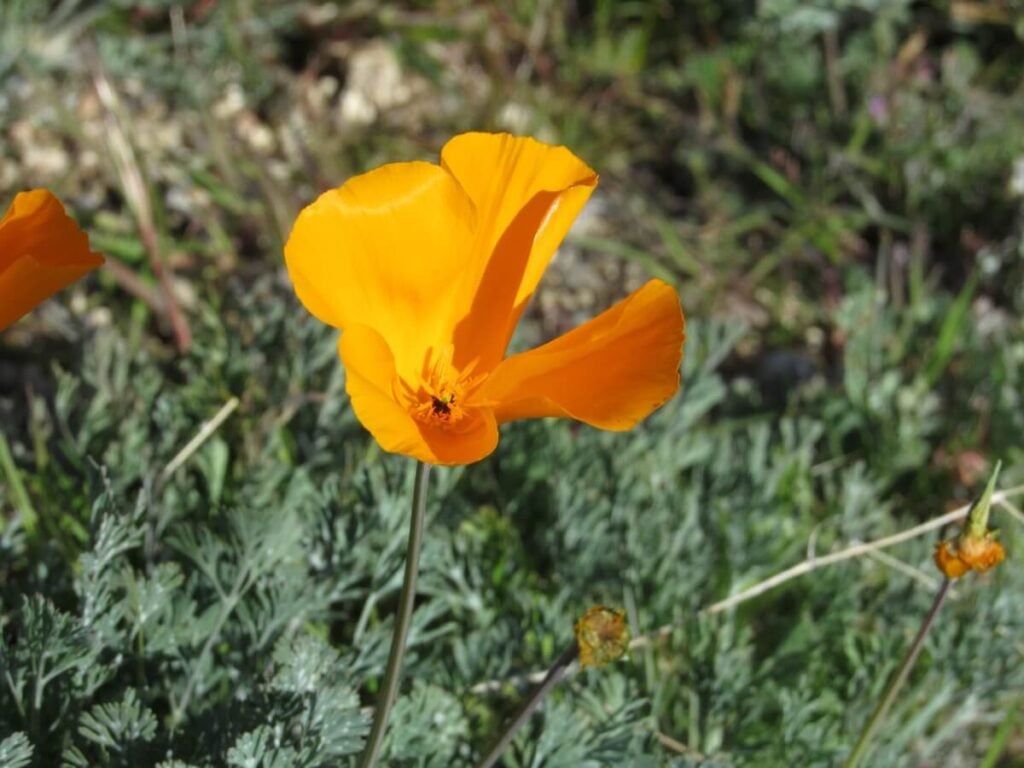
About:
Despite their common name, Arizona poppies aren’t related to true poppies. These herbaceous annuals actually come from the Zygophyllaceae family. Arizona poppies germinate en masse once the summer rains arrive.
Kallstroemia grandiflora plants have large orange or yellow flowers that are similar to those of California poppies. These annuals bloom from summer until fall. Arizona poppies also have opposite, compound leaves that are each divided into five to ten leaflets.
5) Arizona Queen-of-the-Night (Peniocereus greggii)
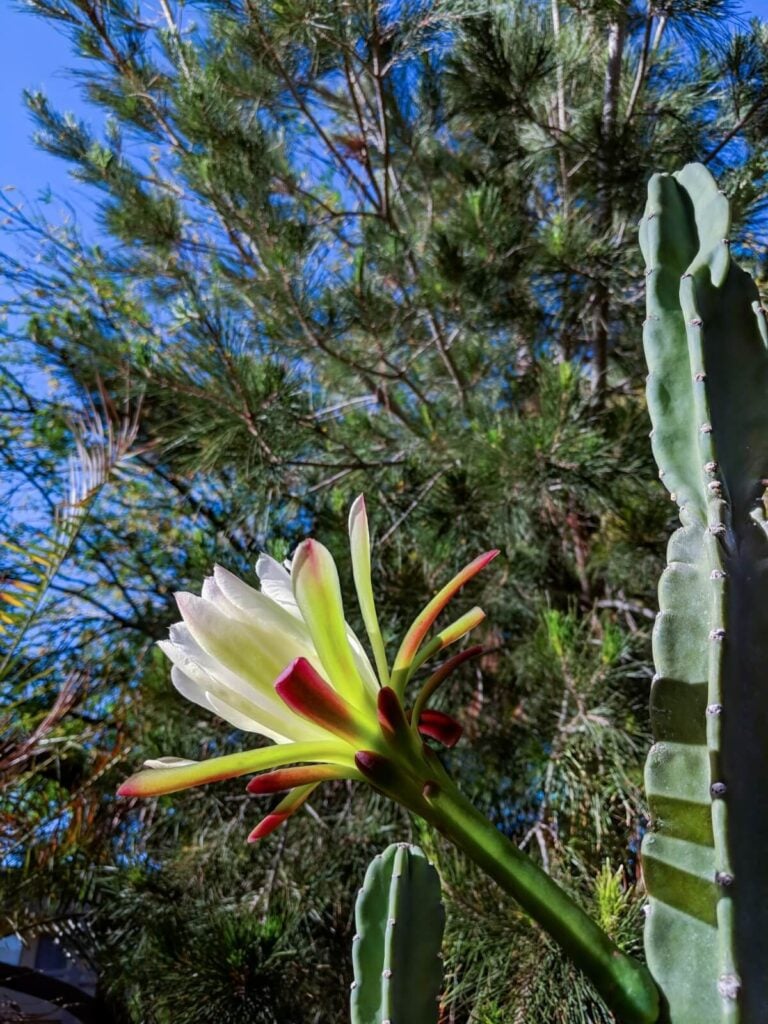
About:
Arizona queen-of-the-night is a type of cactus native to parts of Arizona, New Mexico, and Texas. These cacti have narrow grayish branches, making them look dead at first glance. However, their appearance changes dramatically in June as they start to flower.
Like most desert cacti, Peniocereus greggii plants bloom at night. The large, dramatic white flowers make up for the underwhelming branches. Arizona queen-of-the-night flowers also produce a lovely vanilla-like fragrance.
6) Arizona Thistle (Cirsium arizonicum)
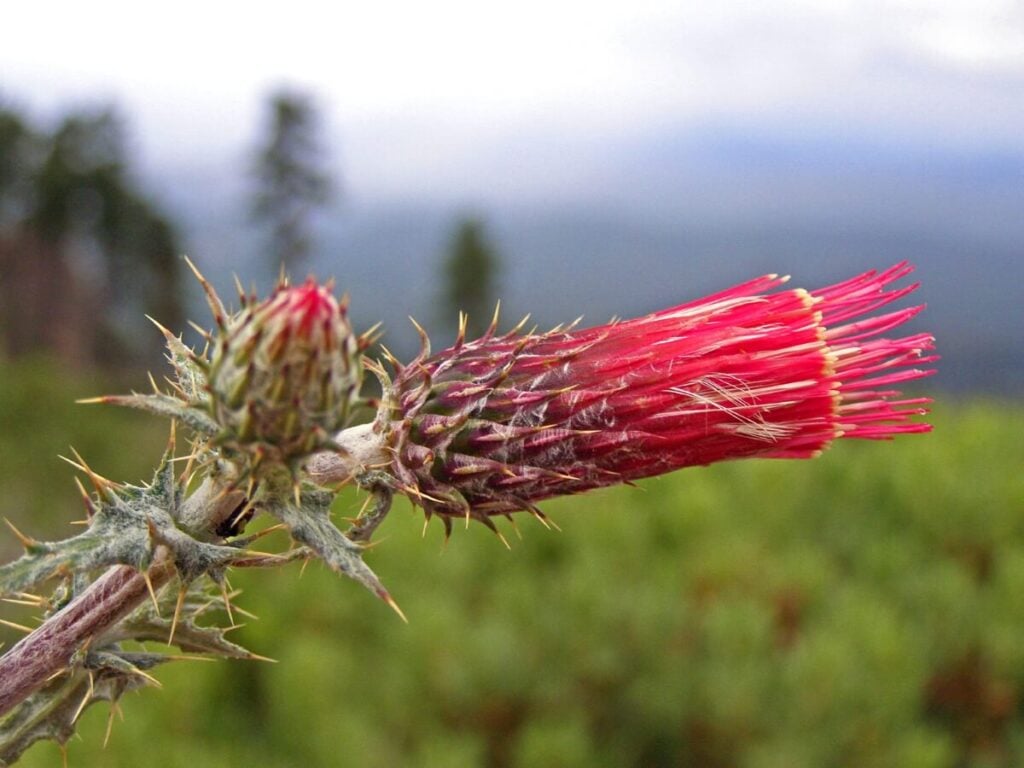
About:
Cirsium arizonicum is a herbaceous biennial or perennial from the aster or daisy family (Asteraceae). These tall thistles are native throughout much of the Southwestern United States and northern Mexico. Arizona thistles are usually found on mountain slopes.
Arizona thistles have spiky elliptical or oblong leaves and typical thistle-like flowers. These pink, purple, or red flowers bloom from late spring until fall. Arizona thistles also attract pollinators like bees and butterflies.
7) Birdcage Evening Primrose (Oenothera deltoides)

About:
Birdcage evening primroses are beautiful wildflowers from the Onagraceae family. These herbaceous annuals thrive in loose, sandy soils across the Southwestern United States. Birdcage evening primroses form clumps of triangular grayish leaves.
Like most evening primroses, Oenothera deltoides blooms at night. These annuals have impressive white flowers that gradually turn pink. Birdcage evening primroses typically bloom from March until September.
8) Blackfoot Daisy (Melampodium leucanthum)
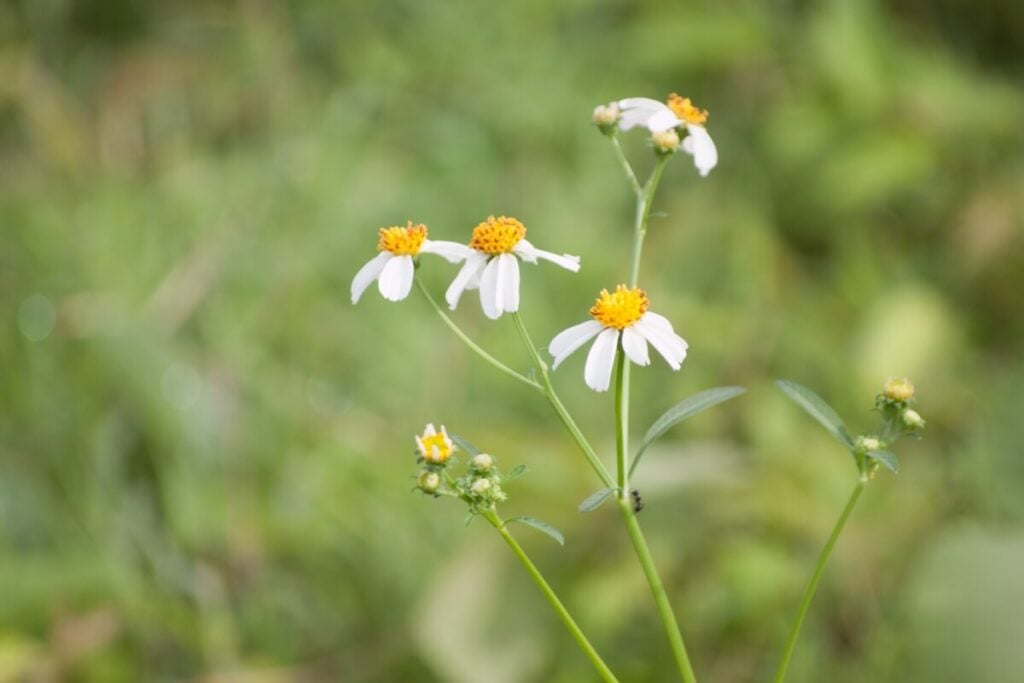
About:
Blackfoot daisies are short-lived herbaceous perennials native to the Southwestern United States. These daisies thrive in limestone soils and are usually found on rocky slopes or grasslands. Melampodium leucanthum dies back almost completely during the winter.
Blackfoot daisies have hairy leaves and white flowers with yellow central florets. The flowers bloom from early spring until fall and produce a sweet honey-like fragrance. These daisies make excellent ornamentals for dry or rock gardens.
9) Blue Palo Verde Blossom (Parkinsonia florida)
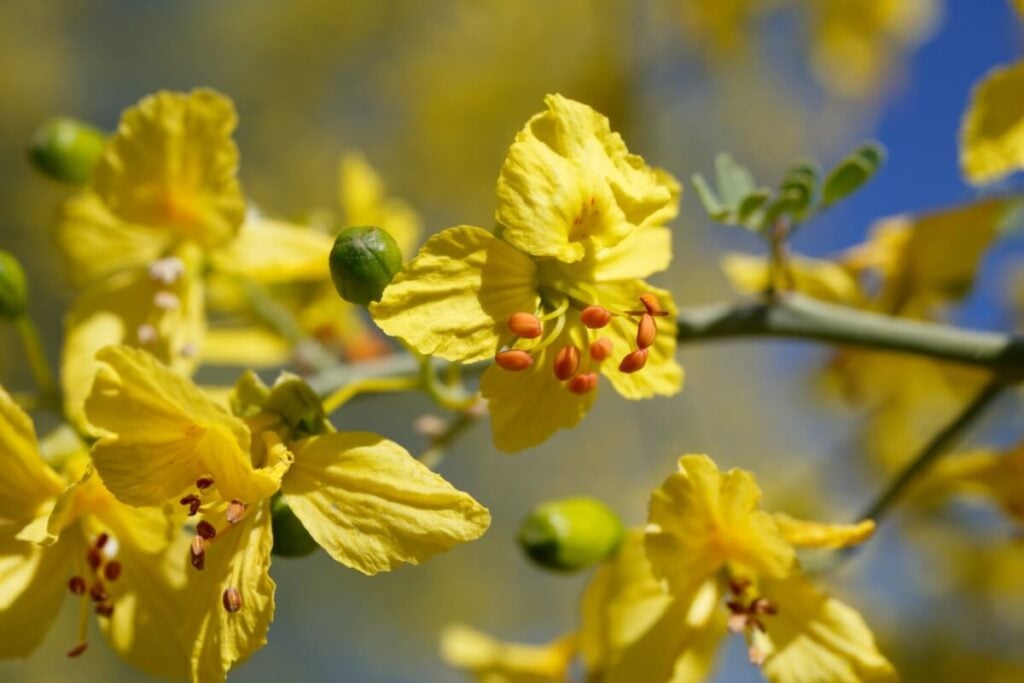
About:
Blue palo verde trees get their common name from the bluish-green hue of their bark. As these trees don’t have leaves for most of the year, the bark absorbs sunlight for photosynthesis instead.
Parkinsonia florida trees erupt with golden-yellow pea-like blossoms during the spring. The flowers are followed by bean pods, which were harvested and eaten by many Native American societies.
10) Brittlebush (Encelia farinosa)
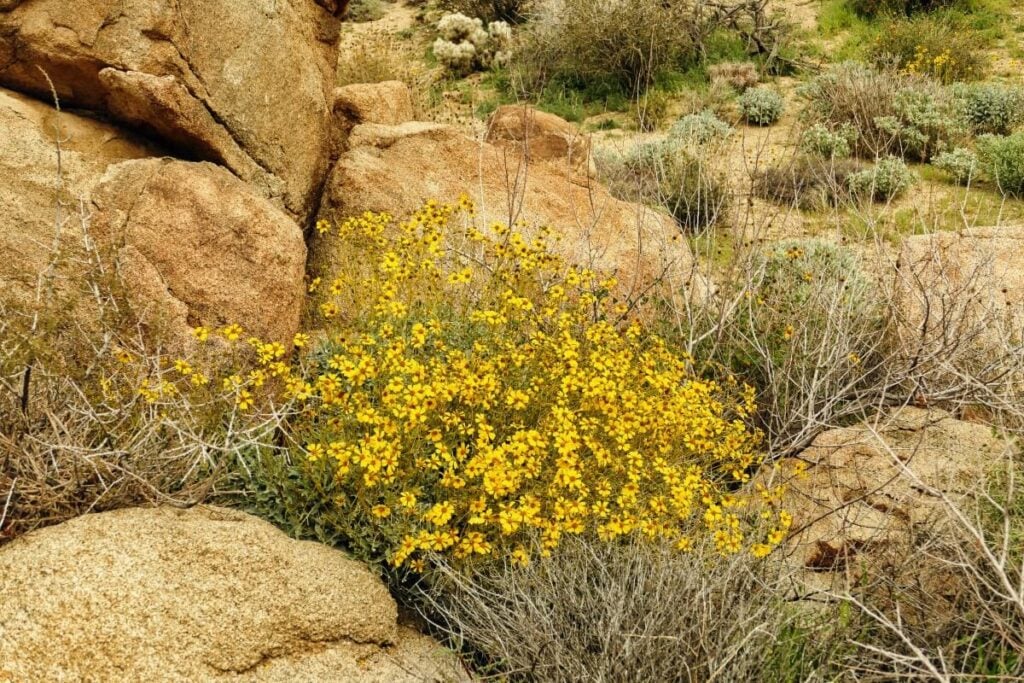
About:
Brittlebushes are some of the most recognizable of Arizona’s native wildflowers. These rounded evergreen shrubs belong to the daisy family. During the dry season, Encelia farinosa shrubs may become deciduous to conserve water.
These shrubs are native to dry, rocky areas of the Southwestern United States. During the spring, brittlebush shrubs produce masses of golden-yellow flowers above the leaves. As such, brittlebushes work well as ornamental shrubs in dry gardens.
11) Candy Barrel Cactus Flower (Ferocactus wislizeni)
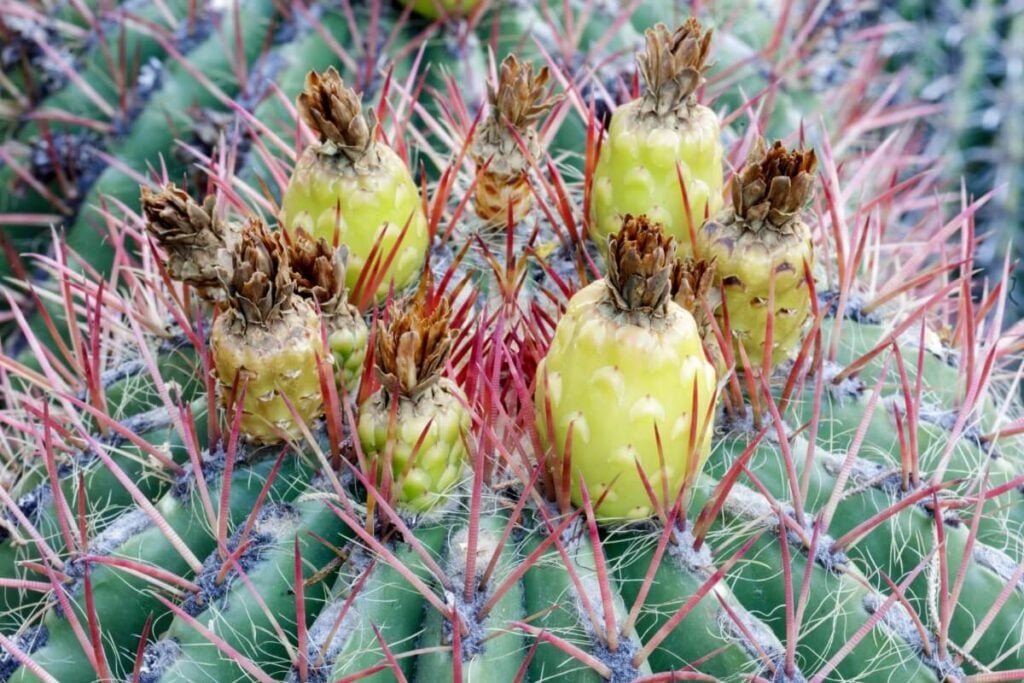
About:
Also known as the fishhook barrel cactus, Ferocactus wislizeni is native to Arizona, New Mexico, and Texas. As its name suggests, the candy barrel cactus gradually forms a barrel-like shape. These cacti also have thick, hooked spines.
During the summer, candy barrel cacti develop large, vibrant red or yellow blooms. These flowers emerge at the top of the cactus. Unfortunately, these beautiful cacti are classed as Vulnerable.
12) Chuparosa (Justicia californica)
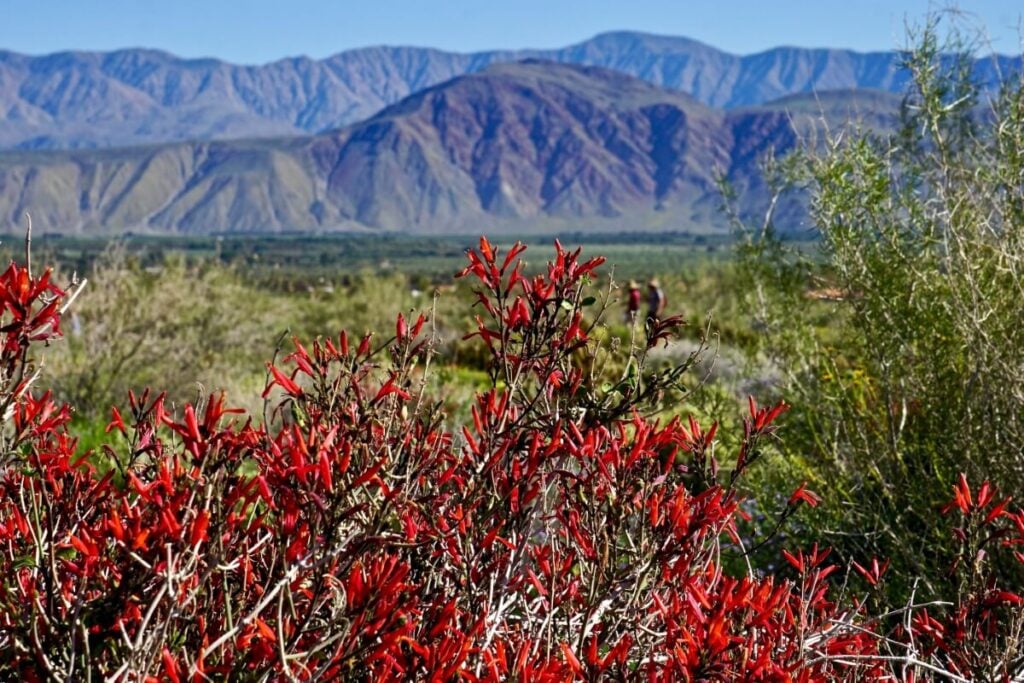
About:
Chuparosa shrubs are also known as hummingbird bushes because they attract pollinators like hummingbirds. These deciduous shrubs belong to the acanthus family (Acanthaceae). Chuparosa shrubs are native to parts of Arizona, California, and New Mexico.
Justicia californica shrubs have arching branches that temporarily have grayish-green succulent leaves. In early spring, Chuparosa shrubs lose these leaves and produce red or yellow tubular flowers. Each flower has two upper lobes and three lower lobes.
13) Claret Cup Cactus Flower (Echinocereus triglochidiatus)
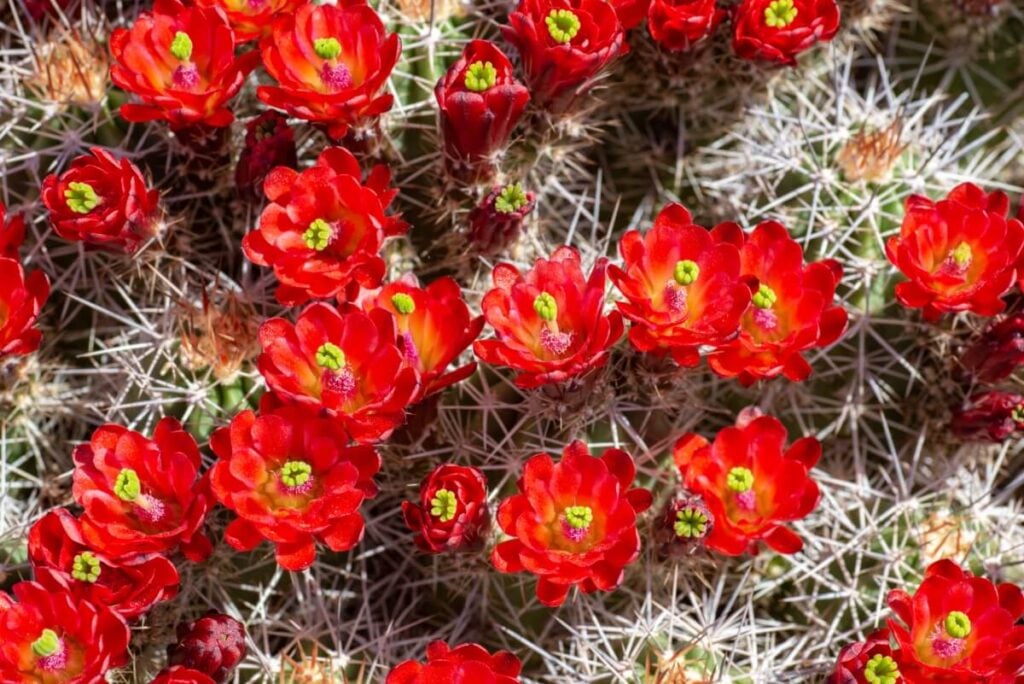
About:
The claret cup cactus is named after its vibrant, deep red cup-shaped flowers. These flowers emerge from mid to late spring and each last for a few days. As such, claret cup cacti work well as ornamentals in desert climates.
Like many hedgehog cacti, Echinocereus triglochidiatus has a thick covering of sharp spines and wooly hairs. Claret cup cacti inhabit deserts or shady mountain forests across the Southwestern United States.
14) Chocolate Daisy (Berlandiera lyrata)
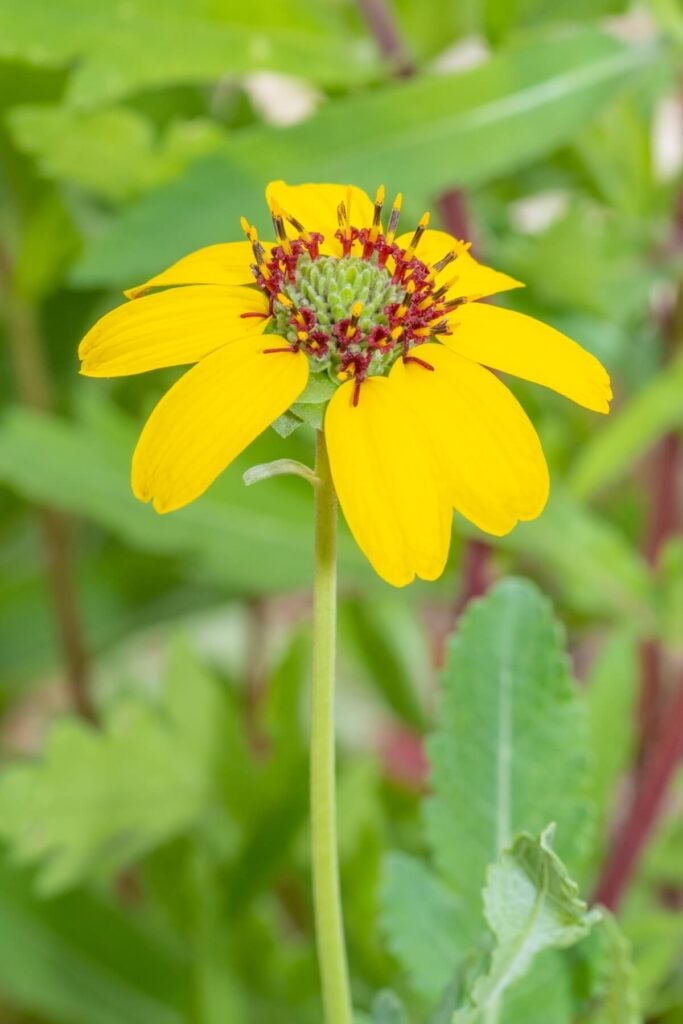
About:
Chocolate daisies are beautiful clump-forming herbaceous perennials that work well as hardy ornamentals. These wildflowers have coarse or velvety green leaves. Chocolate daisies are mainly native to parts of the Southwestern states.
Berlandiera lyrata plants have cheery flowers with golden-yellow ray petals and dark brown central florets. These wildflowers are in bloom from mid-spring until fall. Both the leaves and ray petals emit a chocolate-like fragrance when picked.
15) Cold-desert Phlox (Phlox stansburyi)
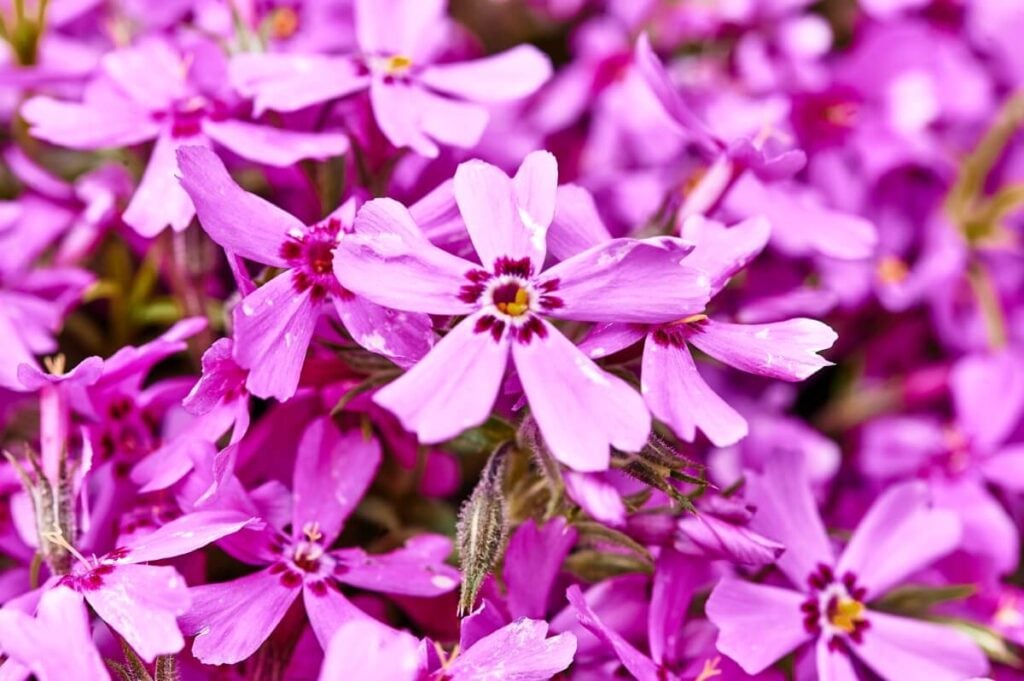
About:
Also known as pink phlox, cold-desert phlox is a herbaceous perennial from the Polemoniaceae family. As its name suggests, this plant thrives in deserts and rocky slopes across the Southwestern United States. These low-growing perennials rarely exceed 8 inches in height.
Cold-desert phlox has branching stems covered with slender grayish-green leaves. From mid-spring until early summer, these plants have masses of pink or white star-shaped flowers.
16) Creosote Bush (Larrea tridentata)
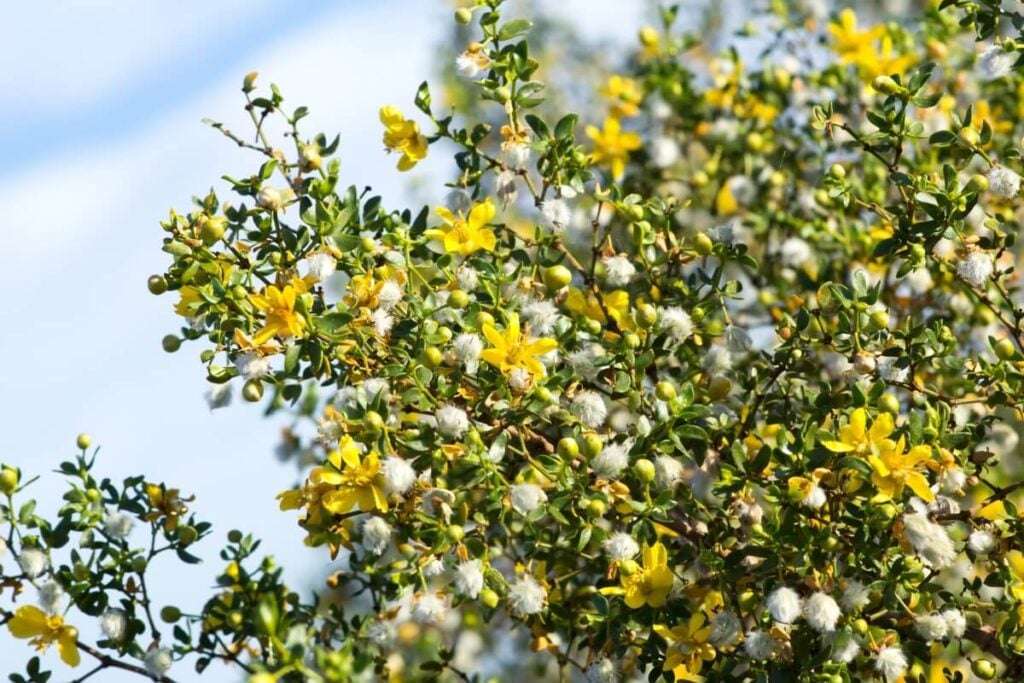
About:
Creosote bushes are some of the most well-known desert plants in the Southwestern United States. These evergreen shrubs spread slowly, with the central parts of the bush dying out as it ages. One creosote bush in California is thought to be over 11,000 years old.
Larrea tridentata shrubs have grayish stems and dark green tri-lobed leaves. These bushes have a distinctive creosote smell, hence the common name. Creosote bushes also produce yellow flowers throughout the year, usually after rainfall.
17) Desert Chicory (Rafinesquia neomexicana)
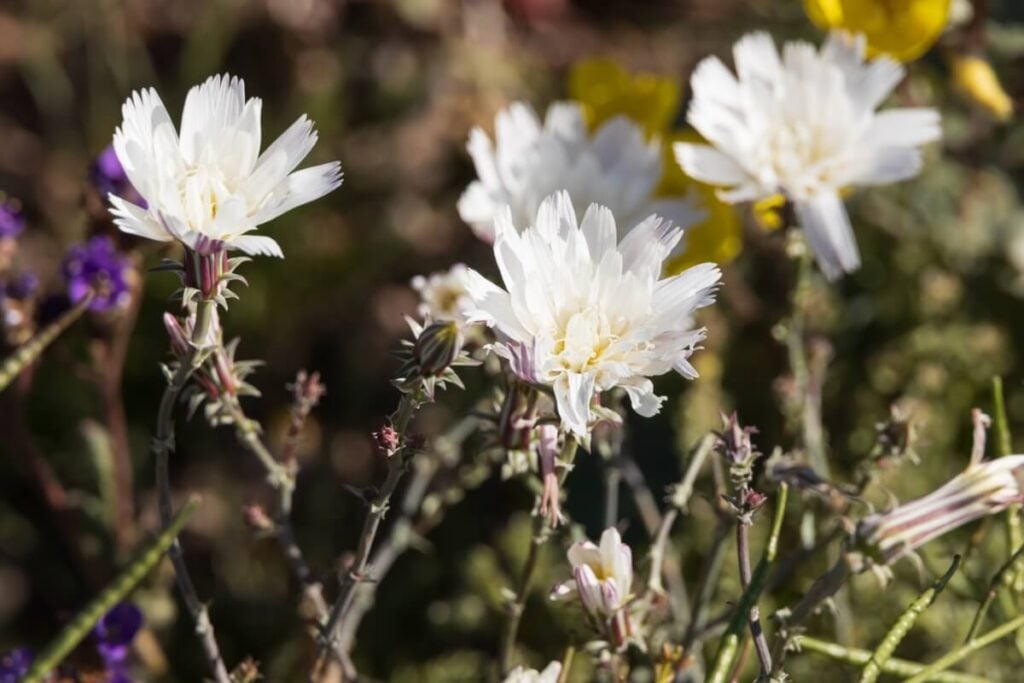
About:
Also known as plumeseed flowers, desert chicory plants are herbaceous annuals from the daisy family. These annuals thrive in dry conditions, making them ideal for arid gardens.
Desert chicory plants have grayish-green stems but don’t produce many leaves. During late spring and early summer, these annuals have large white flowers with overlapping ranks of strap-shaped petals. Desert chicory plants can grow up to 2 feet tall.
18) Desert Four O’Clock (Mirabilis multiflora)

About:
Desert four o-clock plants are stunning herbaceous perennials from the Nyctaginaceae family. These plants have fleshy oval-shaped leaves and branching stems. Desert four o’clock plants also have beautiful pinkish-purple cup-shaped flowers.
Mirabilis multiflora flowers open during the early evening and close up in the morning. These types of perennial wildflowers typically bloom from April until September across the Southwestern United States.
19) Desert Globe Mallow (Sphaeralcea ambigua)
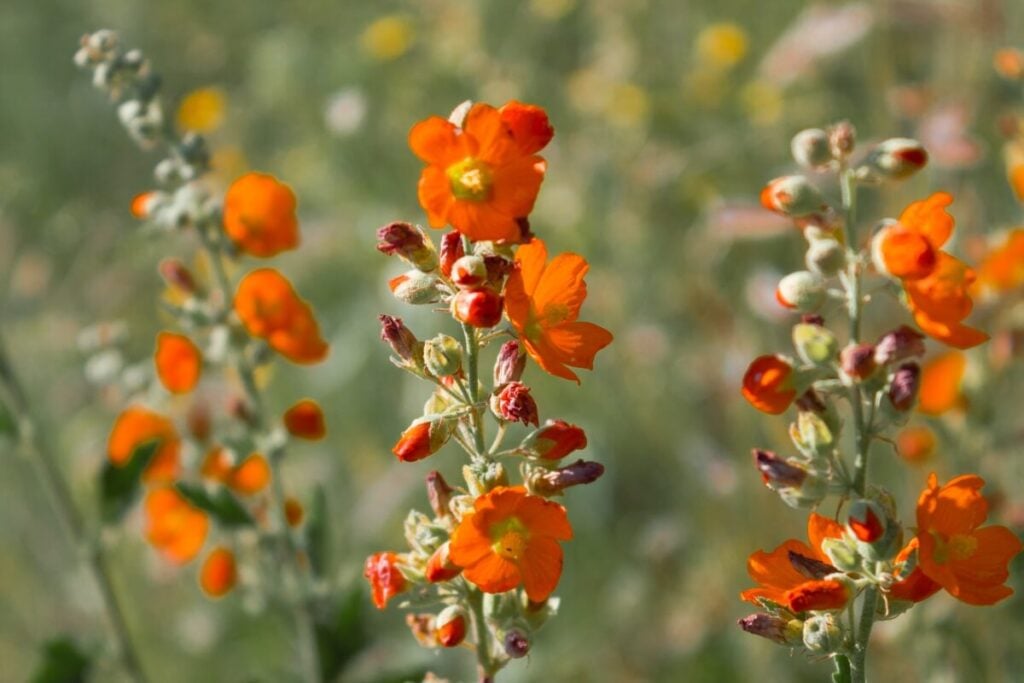
About:
Sphaeralcea ambigua plants are perennial shrubs from the mallow family (Malvaceae). These drought-tolerant shrubs thrive in desert conditions. As such, desert globe mallows can add structure and year-round color to desert or dry gardens.
Desert globe mallows have hairy leaves with rounded or scalloped edges. From late winter until fall, these mallows produce large reddish or pinkish-orange cup-shaped flowers.
20) Desert Ironwood (Olneya tesota)
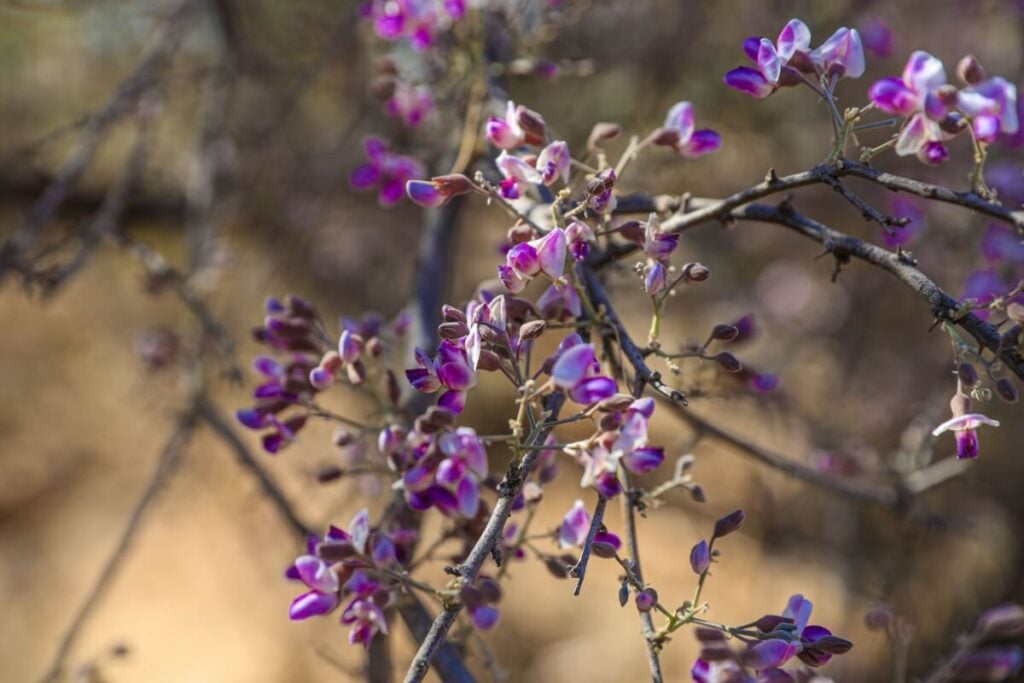
About:
Desert ironwood plants are perennial bushes or trees from the legume family. These trees are native to the deserts of the Southwestern United States. Desert ironwood trees are excellent centerpieces for desert gardens.
Olneya testota trees have smooth, grayish bark and bluish-green pinnate compound leaves divided into several leaflets. From late spring until early summer, these trees have pink, purple, red, or white blossoms.
21) Desert Mariposa Lily (Calochortus kennedyi)
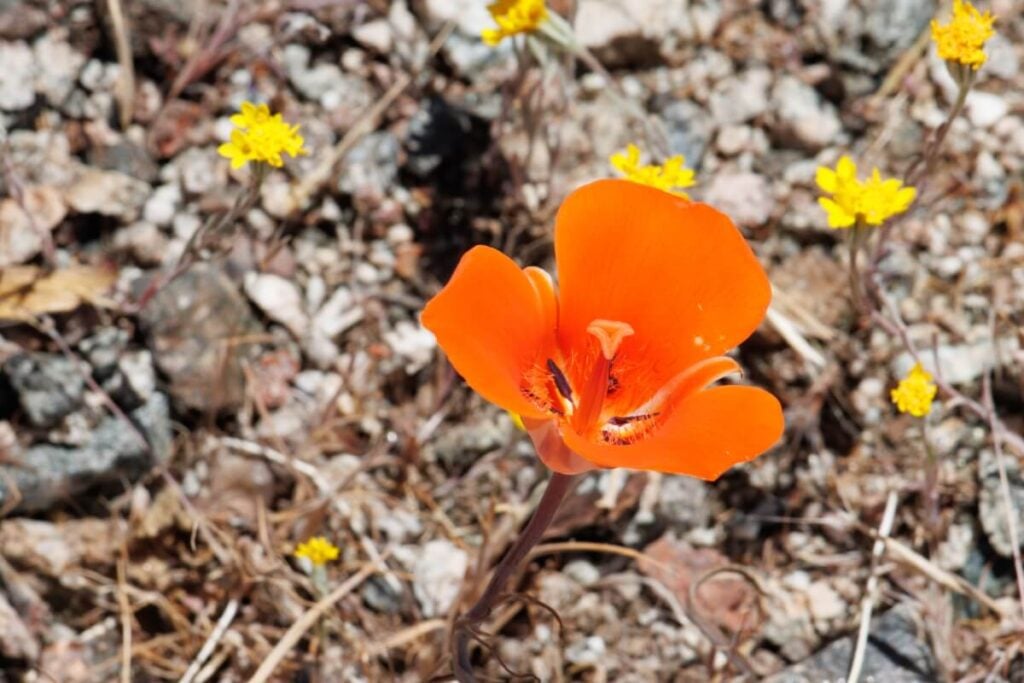
About:
Desert mariposa lilies are some of Arizona’s most vibrant native wildflowers. These herbaceous perennials have clusters of orange, red, or yellow bell-shaped flowers with three petals. The flowers are in bloom from early spring until early summer.
Calochortus kennedyi flowers are native to Arizona, California, Nevada, and Utah. These gorgeous flowers thrive in deserts, dry grasslands, and rocky slopes.
22) Desert Rosemallow (Hibiscus coulteri)
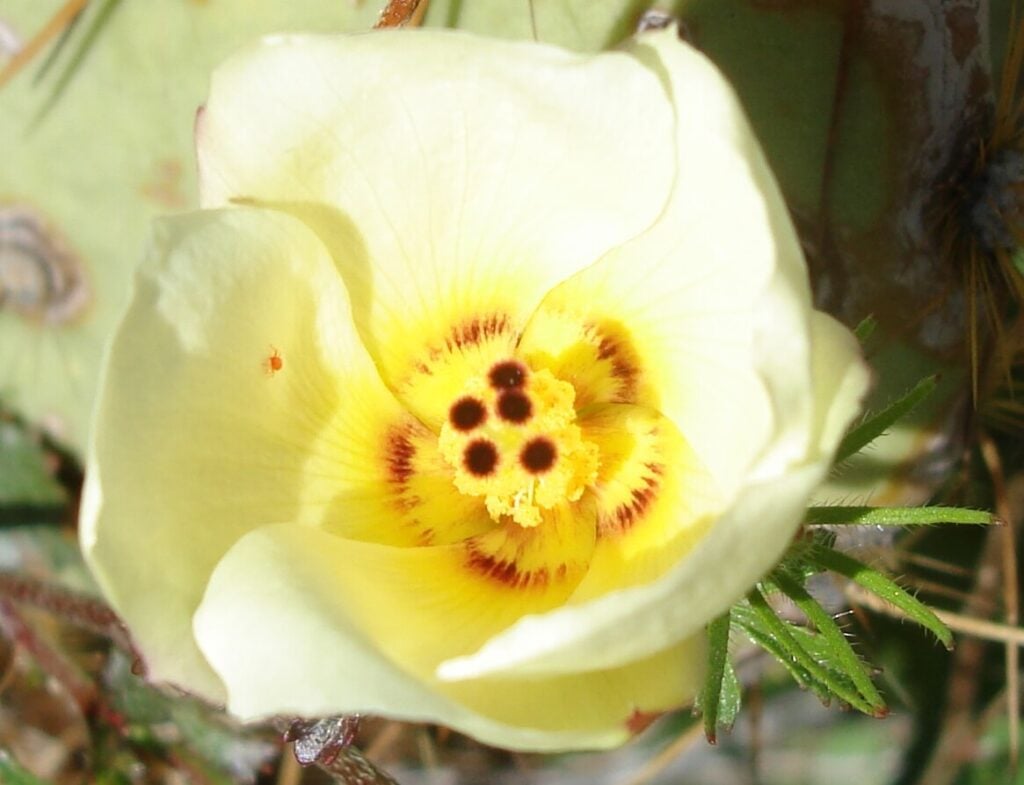
About:
Desert rosemallows are beautiful but tough native hibiscus flowers that thrive across the Southwest. These hibiscus shrubs have creamy-yellow cup-shaped blooms with bright yellow centers. Although short-lived, these perennials are fantastic for adding color to xeriscape gardens.
Hibiscus coulteri shrubs can grow up to 6 feet tall. These drought-tolerant hibiscus also have rough, hairy leaves. Desert rosemallows can flower throughout the year in the right conditions.
23) Desert Sand Verbena (Abronia villosa)
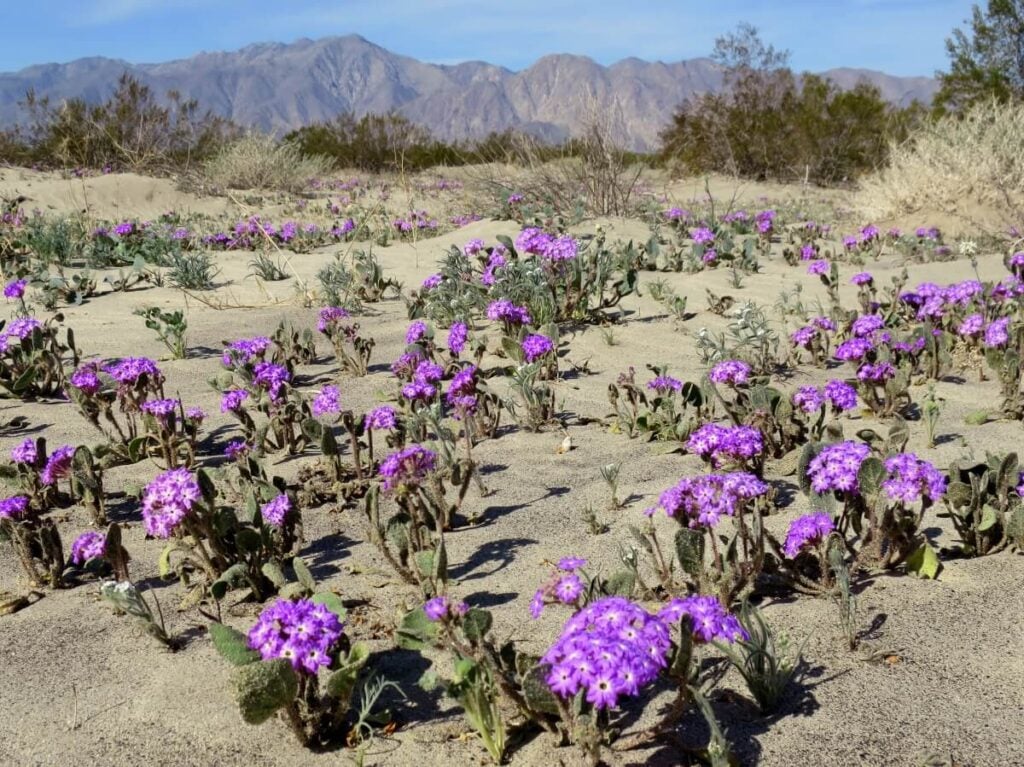
About:
Few of Arizona’s native wildflowers are as showy as desert sand verbenas. These annuals belong to the four o’clock family (Nyctaginaceae). These sand verbenas thrive in the deserts of the Southwestern United States.
Desert sand verbenas are low-growing plants with a spreading habit. The hairy stems bear green oval-shaped leaves and dense clusters of pinkish-purple flowers. The flowers bloom from late winter until mid-spring and produce a thick, sweet scent.
24) Desert Sunflower (Geraea canescens)
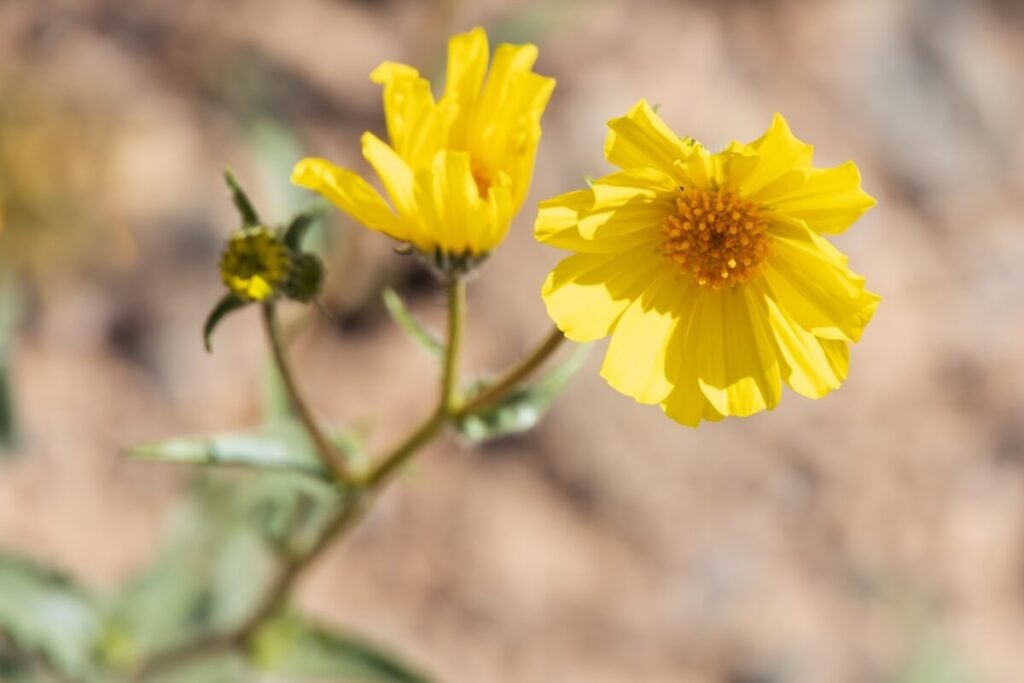
About:
Desert sunflowers are perfectly suited to the dry, hot conditions in the deserts of the Southwestern United States. These herbaceous annuals are native to Arizona, California, Nevada, and Utah.
Geraea canescens plants have hairy stems and grayish-green leaves. These drought-tolerant annuals also produce large flowers with bright yellow ray petals and golden-yellow central florets. Desert sunflowers can often be seen in desert superblooms.
25) Desert Willow (Chilopsis linearis)
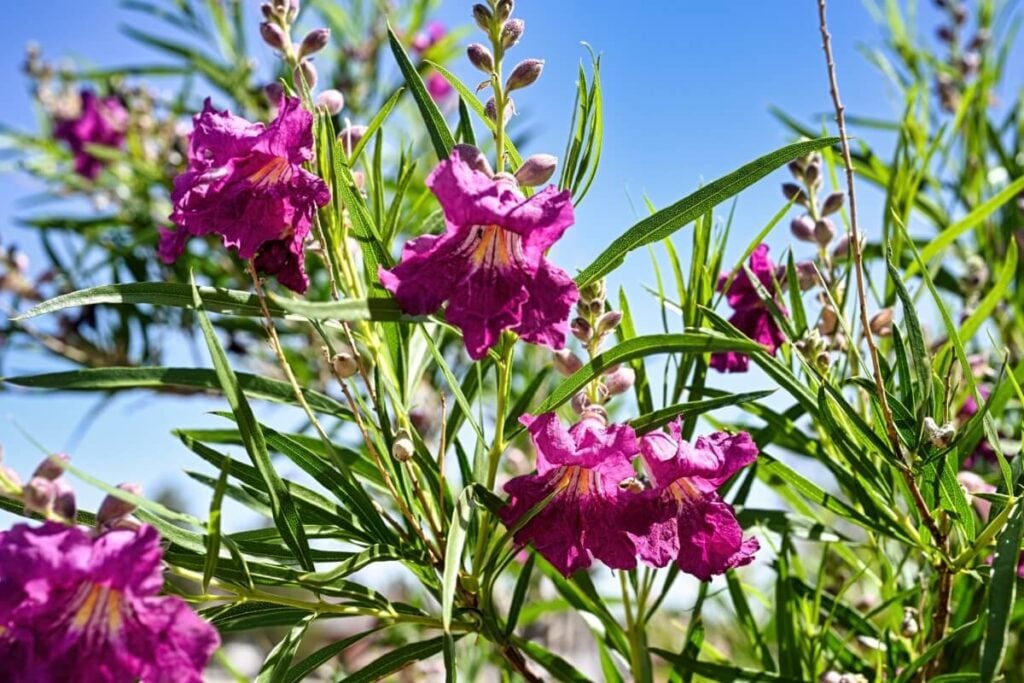
About:
Despite its common name, the desert willow isn’t related to true willow trees. Instead, these deciduous trees belong to the trumpet-vine family (Bignoniaceae). Desert willows grow best along the banks of rivers and streams.
Chilopsis linearis trees have light green willow-like leaves, hence the common name. From mid-spring until fall, desert willows display pink, purple, or white trumpet-shaped blossoms. These large flowers have distinctive ruffled lobes.
26) Fairy Duster (Calliandra eriophylla)

About:
Fairy duster shrubs are known for their unusual yet beautiful flowers. Each flower has a cluster of long pink stamens radiating out from the center. These flowers are typically in bloom from late winter to midsummer.
Calliandra eriophylla shrubs also have deciduous grayish-green leaves. These plants are extremely drought-tolerant and thrive in deserts and dry grasslands across the Southwestern United States.
27) Firecracker Penstemon (Penstemon eatonii)
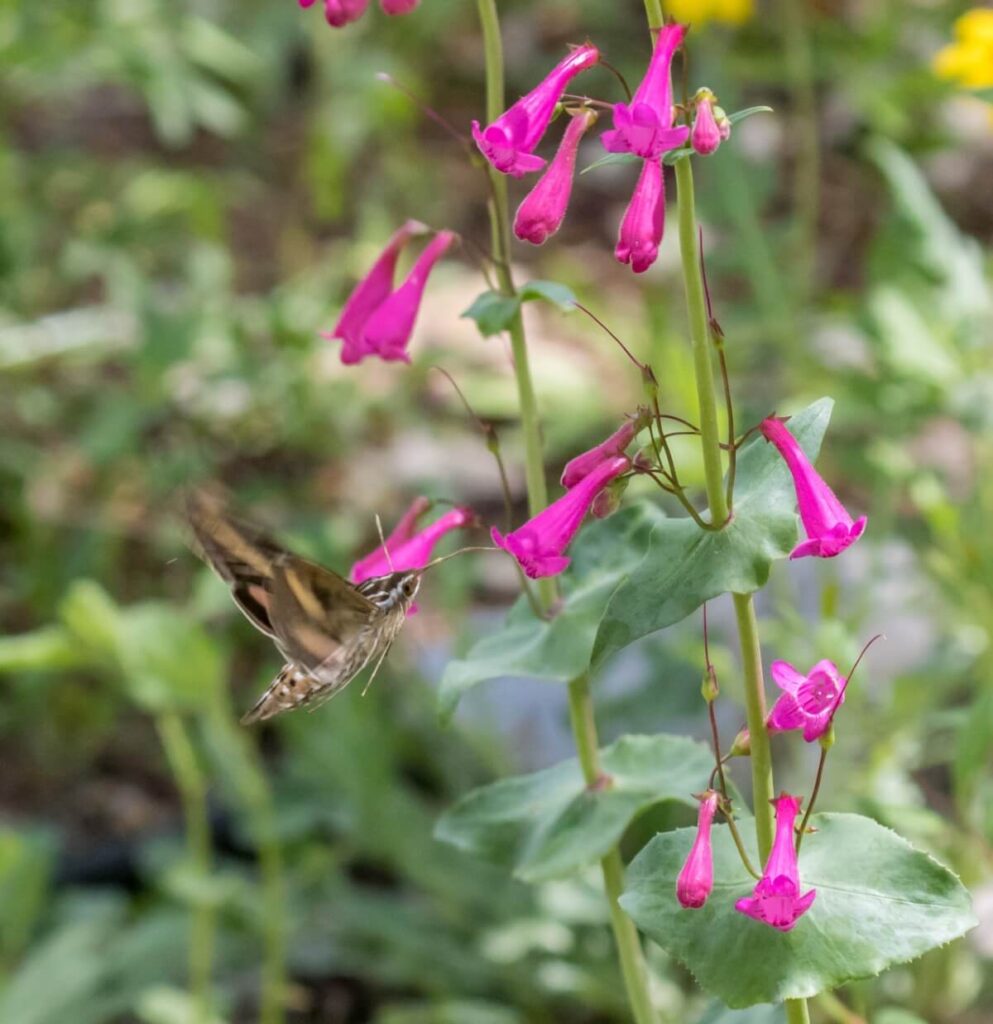
About:
Firecracker penstemons add vibrant color to deserts, grasslands, and woodlands across Arizona. These herbaceous perennials have tubular red flowers with five or six lobes at the tips. Penstemon eatonii flowers bloom throughout the spring and summer.
Firecracker penstemons also have purple upright stems and leathery lanceolate or oval-shaped leaves. These incredible flowers belong to the figwort family (Scrophulariaceae). The flowers are ideal for attracting hummingbirds.
28) Golden Columbine (Aquilegia chrysantha)

About:
Golden columbines are some of Arizona’s most striking native wildflowers. These wonderful native Arizona flowers thrive in moist, shady canyons and valleys. As such, golden columbines are ideal for shady garden borders in the Southwest.
Aquilegia chrysantha plants are herbaceous perennials from the buttercup family (Ranunculaceae). From late spring to early summer, these columbines display large yellow flowers with extremely long spurs. Golden columbines also have fern-like leaves divided into three leaflets.
29) Joshua Tree Blossoms (Yucca brevifolia)
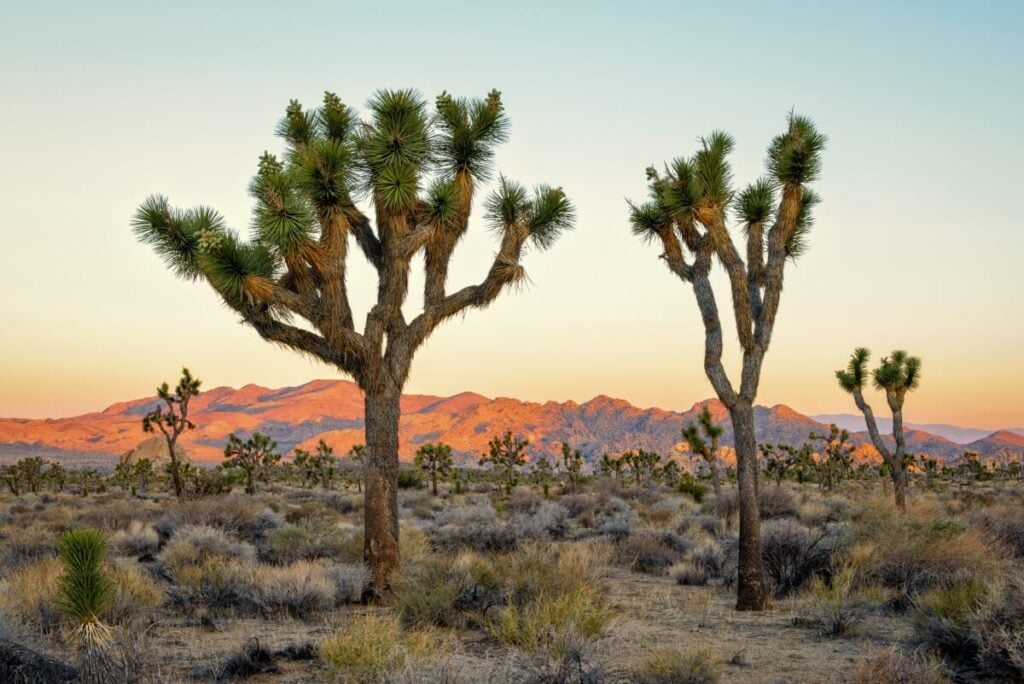
About:
Few plants are as synonymous with the Southwestern United States as Joshua trees. These fast-growing evergreens have upright trunks and clusters of spiky bluish-green leaves with yellowish edges. Yucca brevifolia plants are also the largest yucca species, growing up to 40 feet tall.
Joshua trees also have dense clusters of wonderfully fragrant white flowers. These bell-shaped blossoms appear during the spring. Joshua trees are also extremely important for animals like birds and lizards.
30) Mexican Gold Poppy (Eschscholzia californica ssp. mexicana)
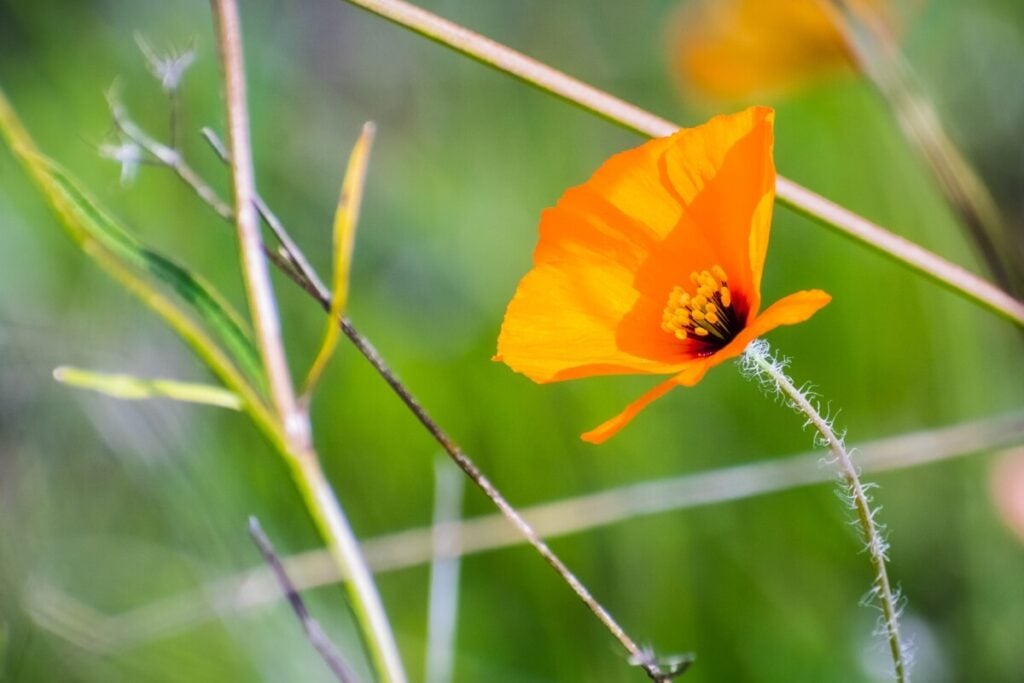
About:
Mexican gold poppies are a subspecies of the popular California poppy (Eschscholzia californica). While the California poppy thrives in grasslands and meadows, Mexican gold poppies inhabit arid deserts.
These herbaceous annuals have deeply divided bluish-green leaves and branching stems. The orange or yellow cup-shaped flowers bloom from late winter until fall. These flowers give off a somewhat spicy scent.
31) Mojave Aster (Xylorhiza tortifolia)
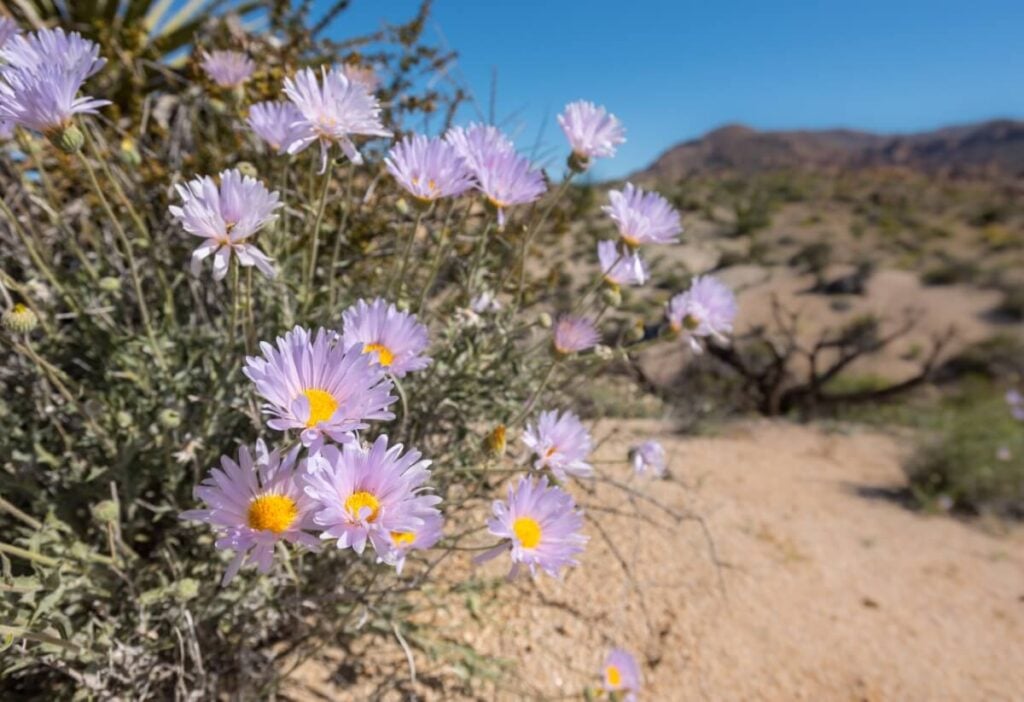
About:
Mojave asters are small perennial shrubs native to the deserts of the American Southwest. These drought-tolerant wildflowers have lance-shaped leaves and grayish stems. Both the stems and the leaves are covered in sticky hairs.
Xylorhiza tortifolia plants bloom from early spring to early summer. The daisy-like flowers have golden-yellow central florets surrounded by pale blue or light purple ray petals.
32) Mojave Lupine (Lupinus sparsiflorus)
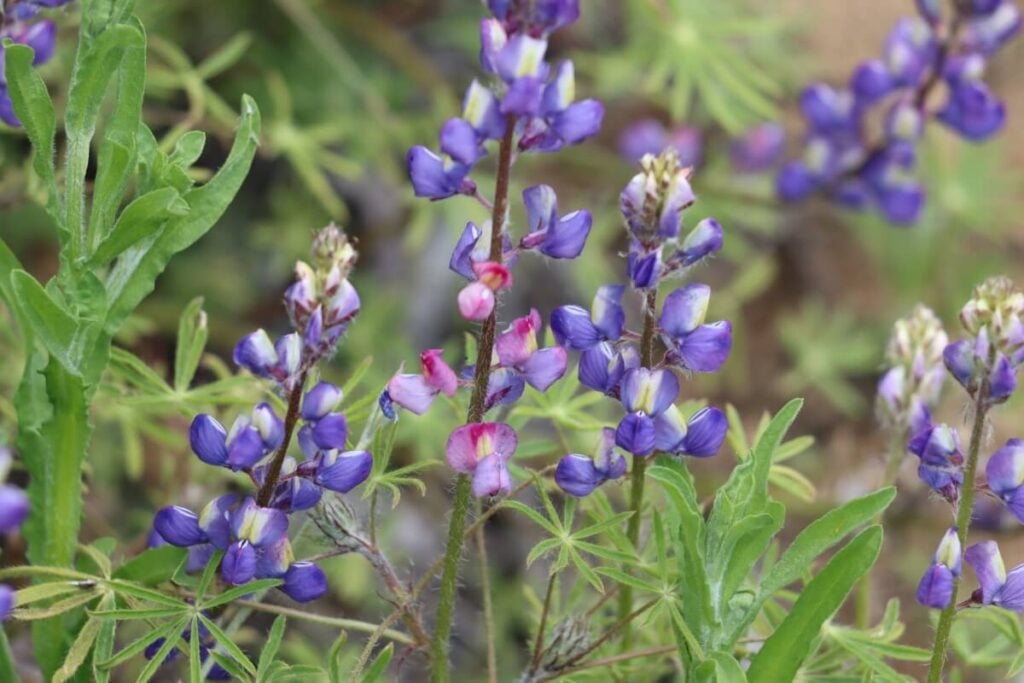
About:
Also known as Coulter’s lupines, Mojave lupine flowers add spectacular spring color to Arizona’s deserts. Lupinus sparsiflorus plants have spikes of bluish-purple flowers that gradually darken as they age.
Mojave lupines bloom from mid-winter until late spring. These herbaceous annuals also have palmate compound leaves consisting of several lance-shaped leaflets. Mojave lupines are also native to California, Nevada, Utah, and northern Mexico.
33) Mountain Phlox (Phlox austromontana)
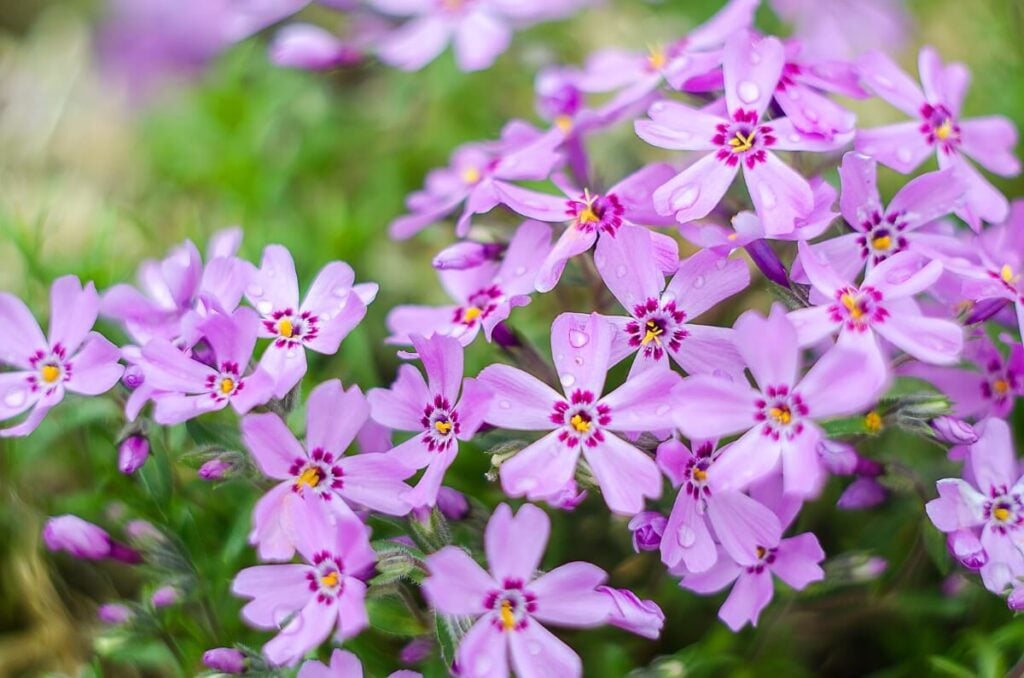
About:
Mountain phlox flowers are native to Arizona’s mountainous woodlands. These fragrant herbaceous perennials form mats of lance-shaped foliage. As such, mountain phlox is an excellent ground cover plant for shady gardens.
Phlox austromontana plants produce masses of pink, purple, or white flowers from mid-spring until midsummer. This phlox species is native throughout much of the Western United States.
34) Ocotillo Flowers (Fouquieria splendens)
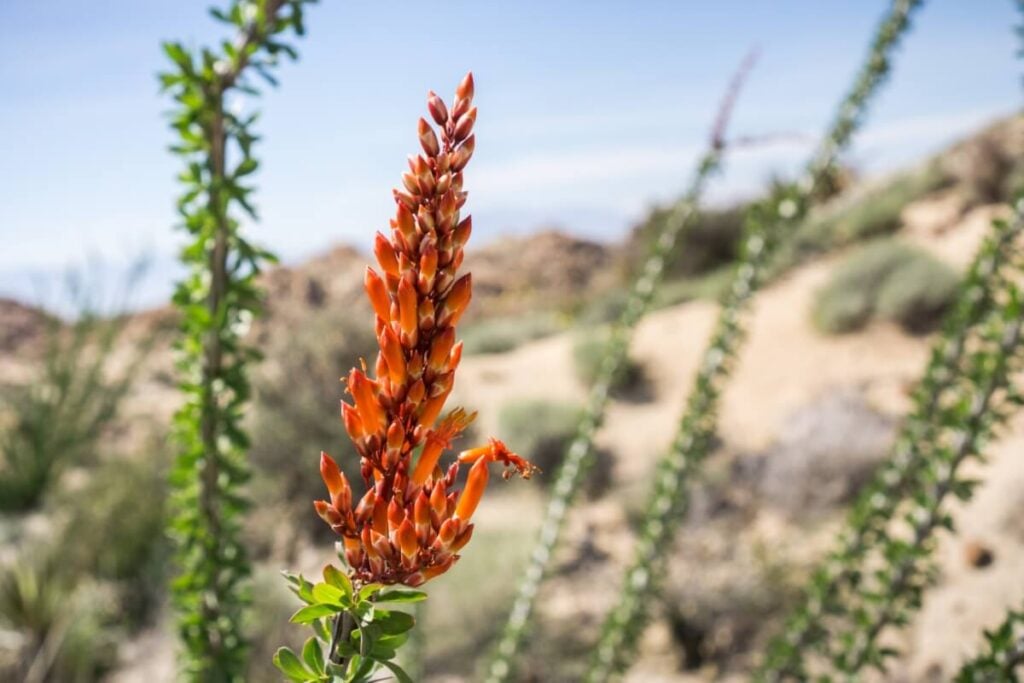
About:
Ocotillo plants are unusual desert shrubs found throughout the American Southwest. These plants thrive in rocky habitats. During the dry season, ocotillo plants have seemingly lifeless clumps of spiny, woody stems.
However, once exposed to rain, ocotillo shrubs develop small oval-shaped leaves and bright red flowers. These vibrant tubular flowers form dense clusters at the tips of the branches.
35) Organ Pipe Cactus Flower (Stenocereus thurberi)
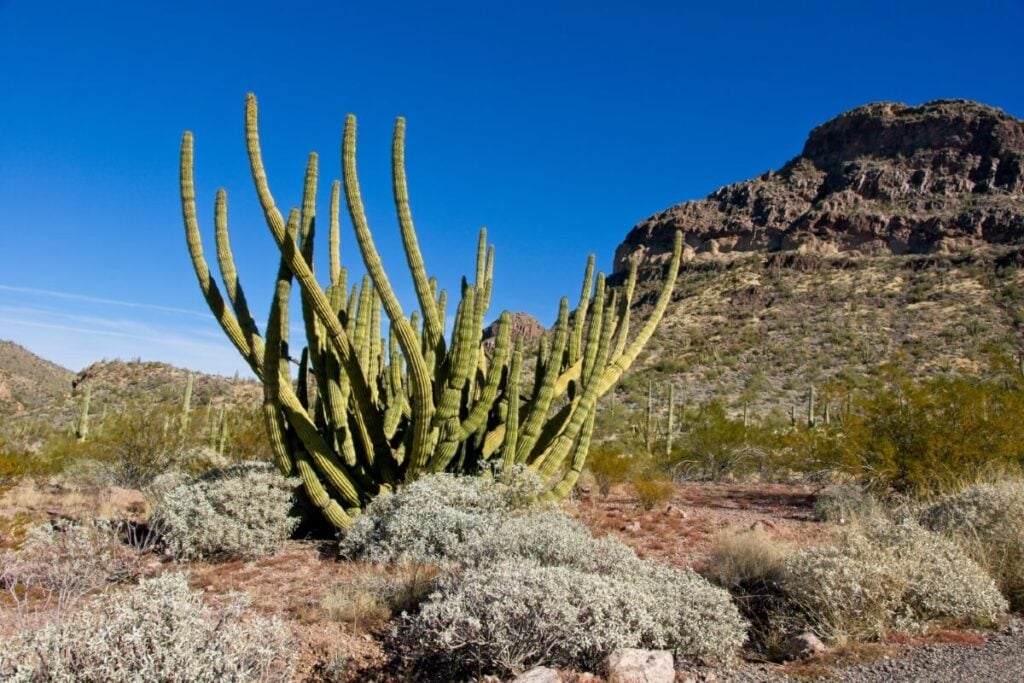
About:
While the saguaro cactus is more well-known, the organ pipe cactus is equally spectacular. These cacti form upright thickets of ribbed stems covered in imposing spines. These cacti take more than a century to fully mature.
Once old enough, organ pipe cacti produce pink, purple, or white flowers. These flowers bloom during the night, attracting nocturnal pollinators like bats.
36) Parry’s Agave (Agave parryi)
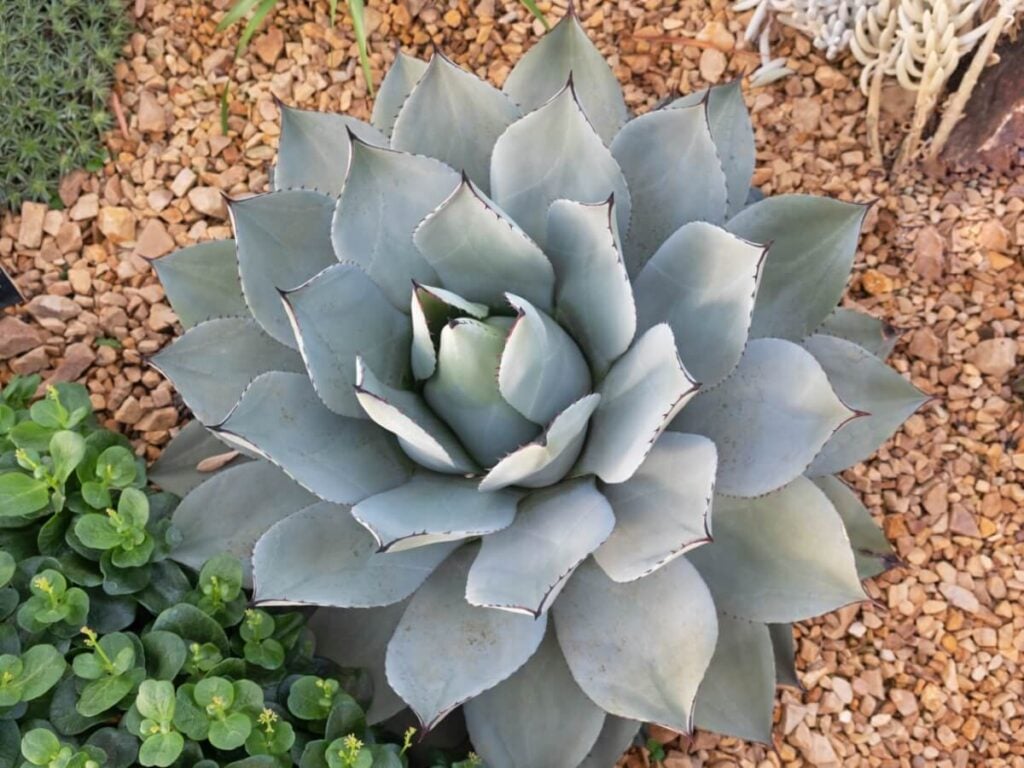
About:
Like cacti, agave plants are synonymous with the desert. Parry’s agave is one of Arizona’s most attractive native agave plants. These succulents form large rosettes of broad, light grayish-green leaves. Each leaf has a sharp spine at the tip.
Agave parryi plants also produce tall stalks bearing dense clusters of yellow flowers. These flowers bloom from mid-spring to late summer.
37) Plateau Goldeneye (Viguiera dentata)

About:
Plateau goldeneye flowers are herbaceous perennials from the daisy family. These drought-tolerant wildflowers thrive in shady woodlands and open grasslands. As such, plateau goldeneye flowers work well in shady garden borders.
Viguiera dentata plants form clumps of upright stems and triangular leaves. These perennials also bloom from summer until fall, producing bright yellow flowers with densely packed central florets.
38) Prickly Pear Cactus Flower (Opuntia spp.)
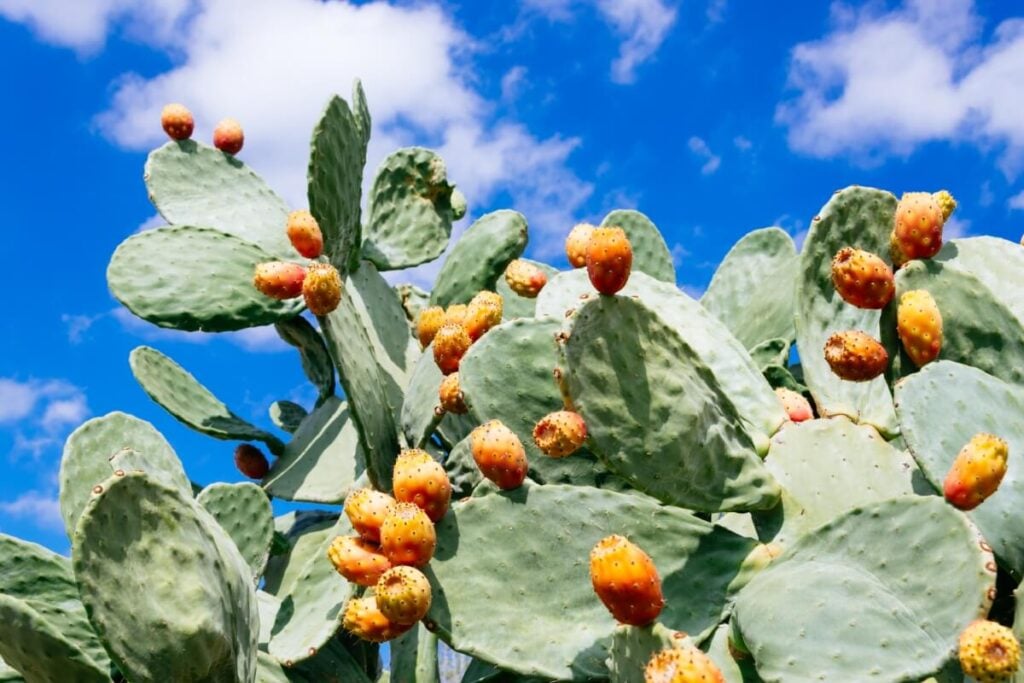
About:
The prickly pear cactus is one of Arizona’s most famous native plants. The Opuntia genus contains several species, including Opuntia aurea and Opuntia phaeacantha. Prickly pear cacti have large, succulent leaf pads covered in short spines.
Prickly pear cacti also have stunning flowers, with the exact color depending on the species. Many species have bright yellow flowers that bloom during the spring.
39) Purple Mat (Nama demissum)

About:
Purple mat plants are compact, low-growing herbaceous annuals from the borage family (Boraginaceae). These attractive flowers inhabit dry, rocky, and sandy soils across the Southwest.
Nama demissum plants grow in clumps of hairy, sticky leaves. During the spring, these clumps produce groups of small pinkish-purple trumpet-shaped flowers with five rounded petals. These flowers usually emerge after moderate rainfall.
40) Roundleaf Phacelia (Phacelia rotundifolia)
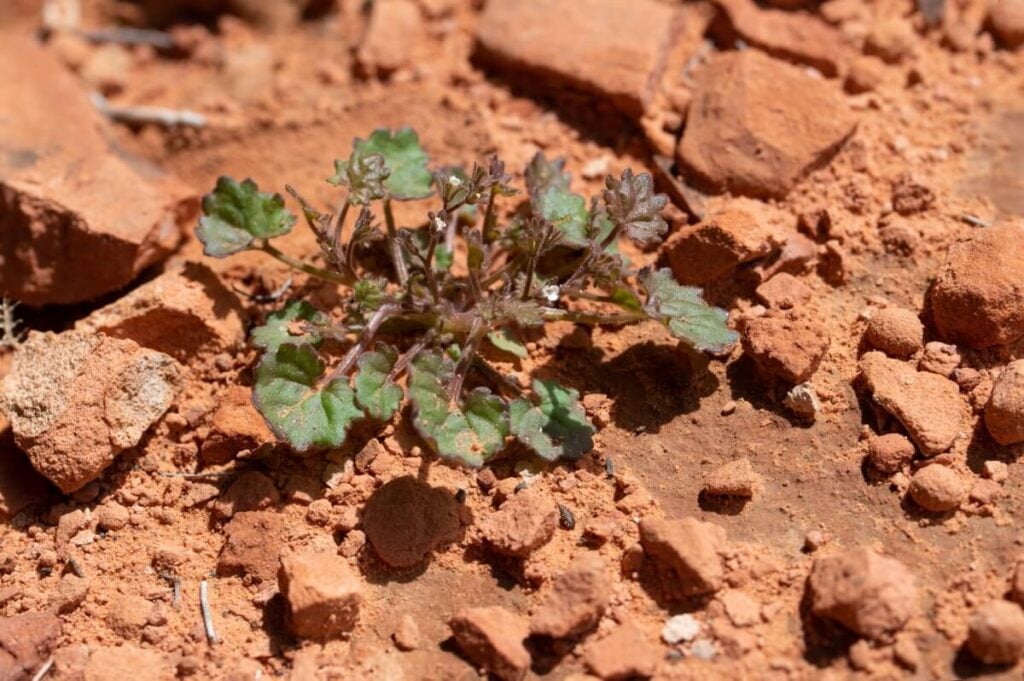
About:
Roundleaf phacelias, also known as scorpionweeds, are herbaceous annuals native to the Southwestern US. These wildflowers come from the borage family. These phacelias typically inhabit woodland and scrubland habitats.
Phacelia rotundifolia plants form clumps of rounded leaves with scalloped margins. During the spring and early summer, small bell-shaped white flowers appear among the foliage.
41) Sacred Datura (Datura wrightii)
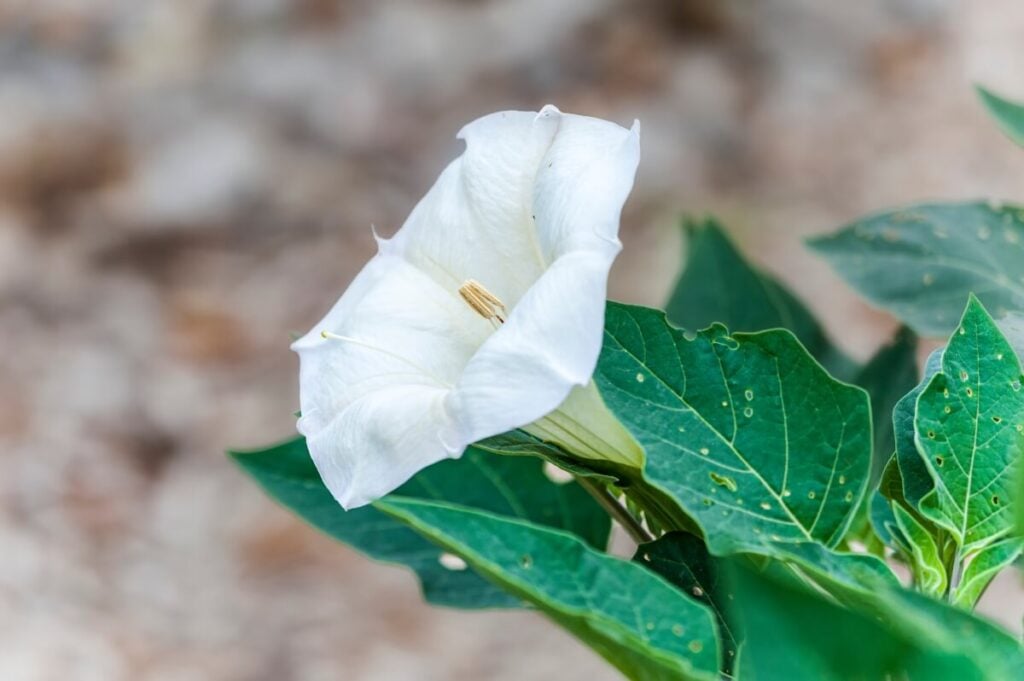
About:
Datura wrightii plants are herbaceous annuals from the nightshade family (Solanaceae). Like many nightshades, these plants are extremely poisonous. Sacred datura flowers grow throughout the American Southwest and northern Mexico.
Sacred datura plants have clumps of coarse, elliptical leaves. The plant gives off an extremely unpleasant smell. These annuals also have large, white trumpet-shaped flowers that have a sweet scent.
42) Saguaro Blossom (Carnegiea gigantea)
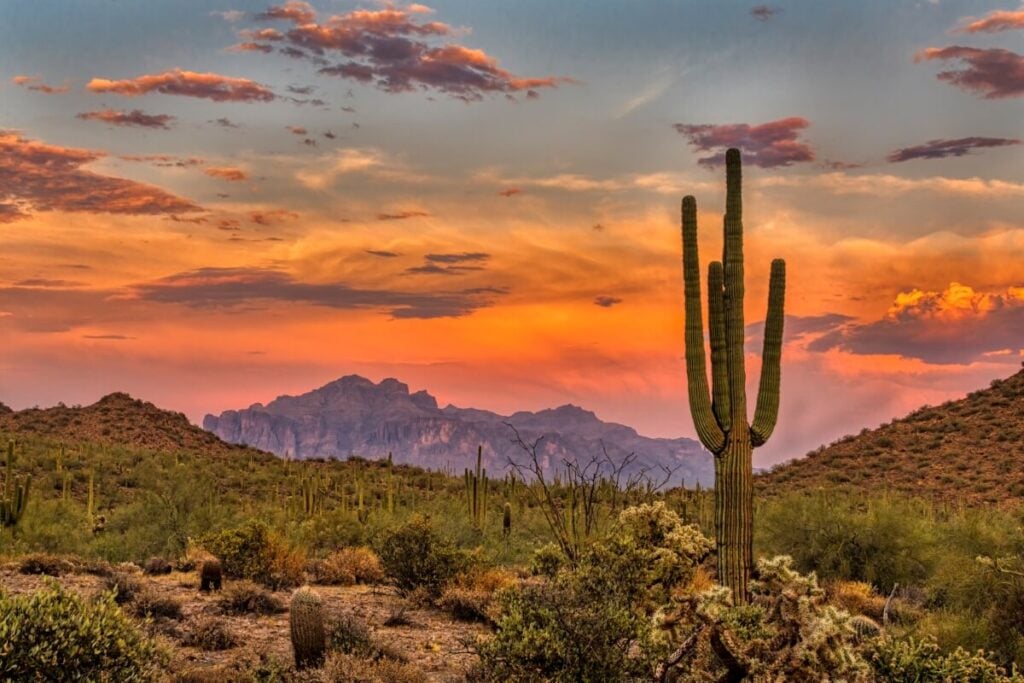
About:
The saguaro cactus is one of the most famous symbols of Arizona. As such, the blossom of the saguaro cactus was officially recognized as the state flower in 1931. One of the best places to see these impressive cacti is the Saguaro National Park.
Saguaro cacti have thick upright stems with several upright arms. During late spring and early summer, saguaro cacti also have large white trumpet-shaped flowers. These waxy blossoms open at night.
43) Tufted Evening Primrose (Oenothera caespitosa)

About:
Tufted evening primroses are elegant herbaceous perennials that thrive in dry, rocky areas in Arizona. As such, these night-blooming flowers work well in dry gardens.
Oenothera caespitosa plants have oblong leaves with toothed edges that form basal rosettes. These primroses bloom from spring until early fall and have a delicate sweet scent. Tufted evening primroses have pink, purple, or white flowers with distinctive heart-shaped petals.
44) Velvet Mesquite Blossom (Prosopis velutina)
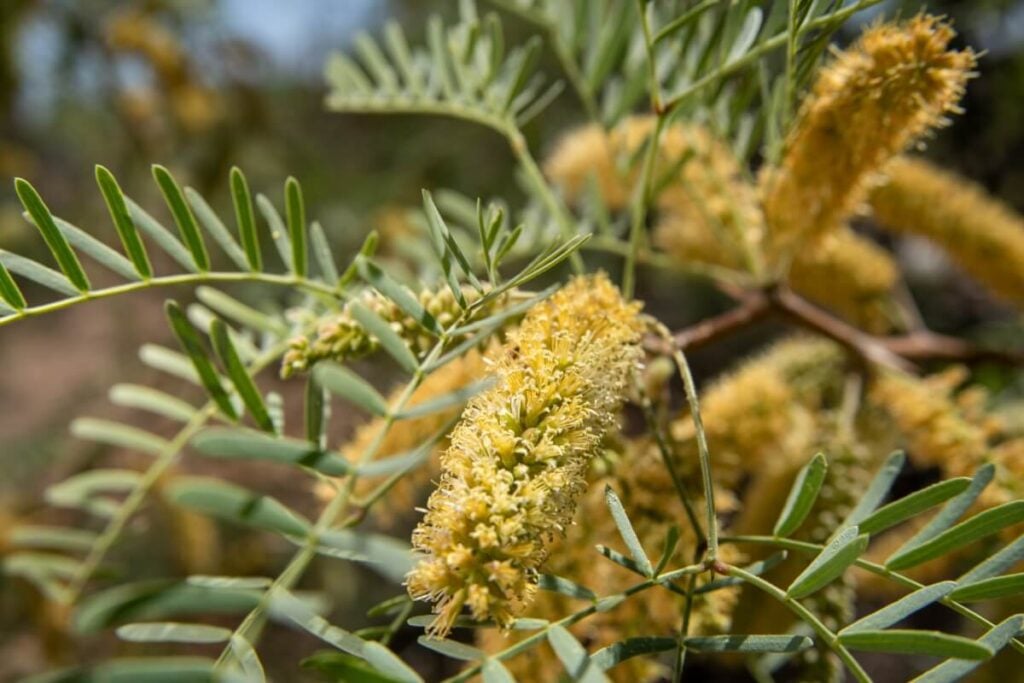
About:
Velvet mesquite trees thrive in the deserts of Arizona and northern Mexico. These trees come from the legume family and can grow up to 50 feet tall. Velvet mesquite trees also have velvety, deciduous leaves consisting of several leaflets.
From late spring until fall, these trees produce creamy white or yellow flowers. These stunning blossoms are ideal for attracting pollinators.
45) Wholeleaf Indian Paintbrush (Castilleja integra)
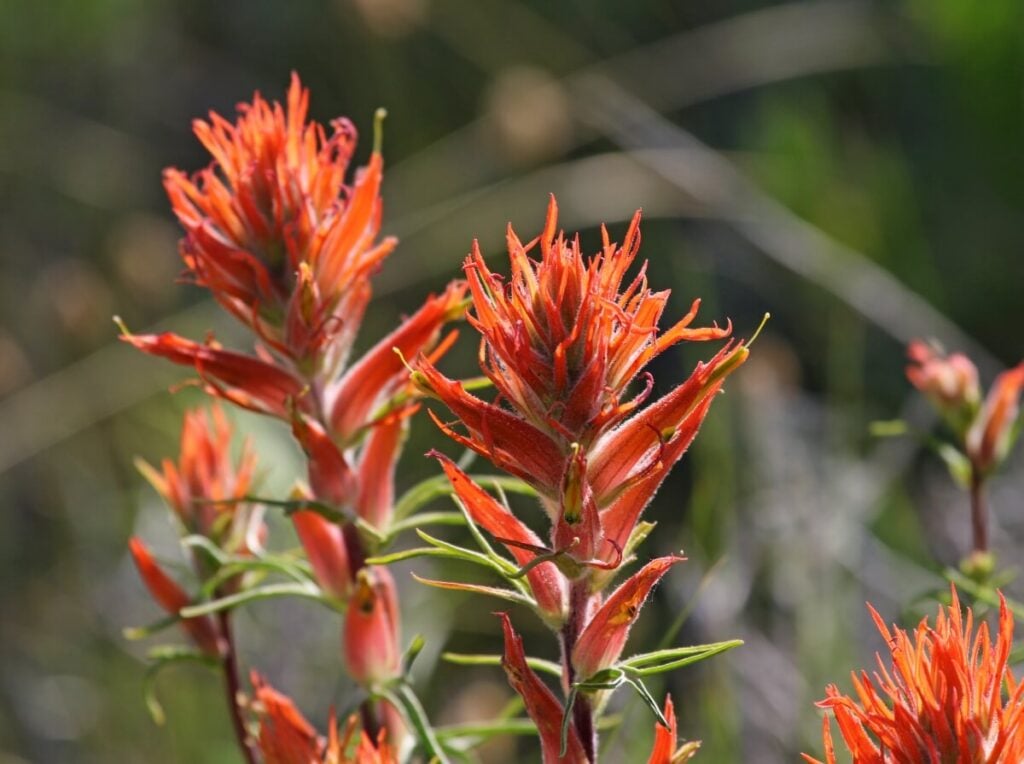
About:
Also known as the Southwestern paintbrush, the wholeleaf Indian paintbrush is a herbaceous perennial from the broomrape family (Orobanchaceae). These wildflowers have large, vibrant red flowers that bloom throughout the year.
As drought-tolerant plants, these Indian paintbrushes are ideal for xeriscape or rock gardens. Castilleja integra plants spread their parasitic roots out to siphon nutrients from surrounding plants.
46) Wishbone Bush (Mirabilis laevis)

About:
Wishbone bushes are herbaceous perennials that belong to the four o’clock family. These attractive wildflowers have pink or purple flowers comprised of up to ten petals. In the right conditions, these plants can flower throughout the year.
Mirabilis laevis plants thrive in open woodlands across the Southwestern United States. These flowers also grow well on slopes or mountainous areas.
47) Woolly Paperflower (Psilostrophe tagetina)
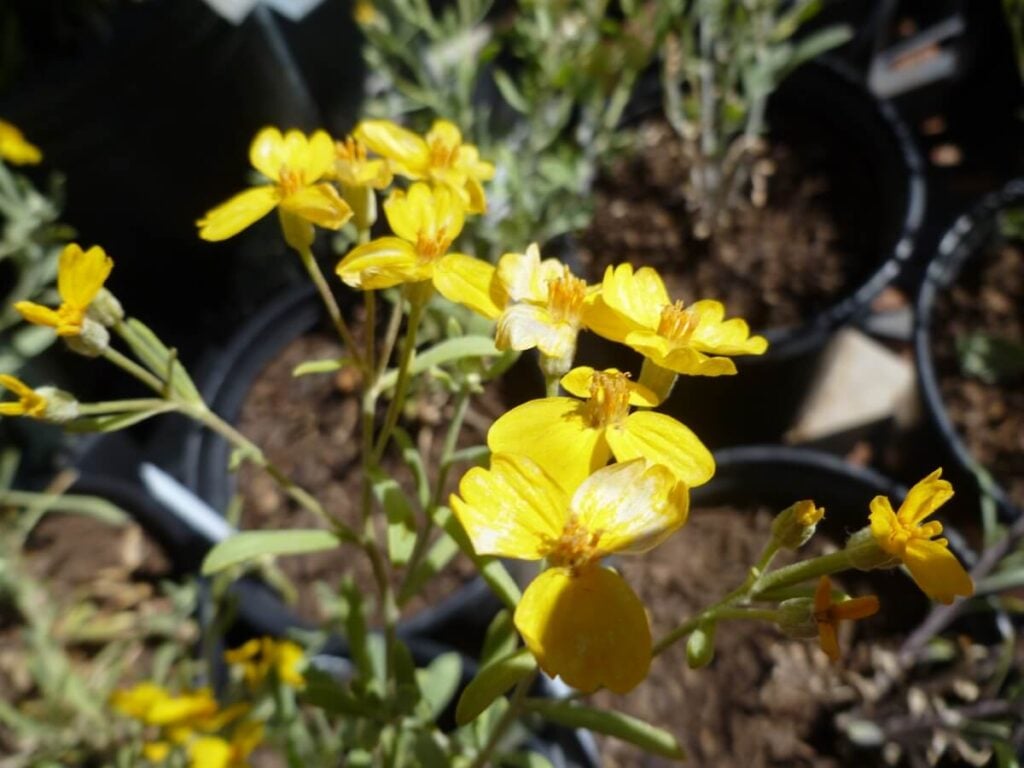
About:
Woolly paperflowers are native throughout central and southwestern regions of the United States. These herbaceous biennials or perennials come from the daisy family. Woolly paperflowers form clumps of hairy branching stems.
These wildflowers get their name from their bright yellow flowers, which gradually fade and become papery as they age. Woolly paperflowers can bloom throughout the year in their native range.
48) Yellow Bells (Tecoma stans)
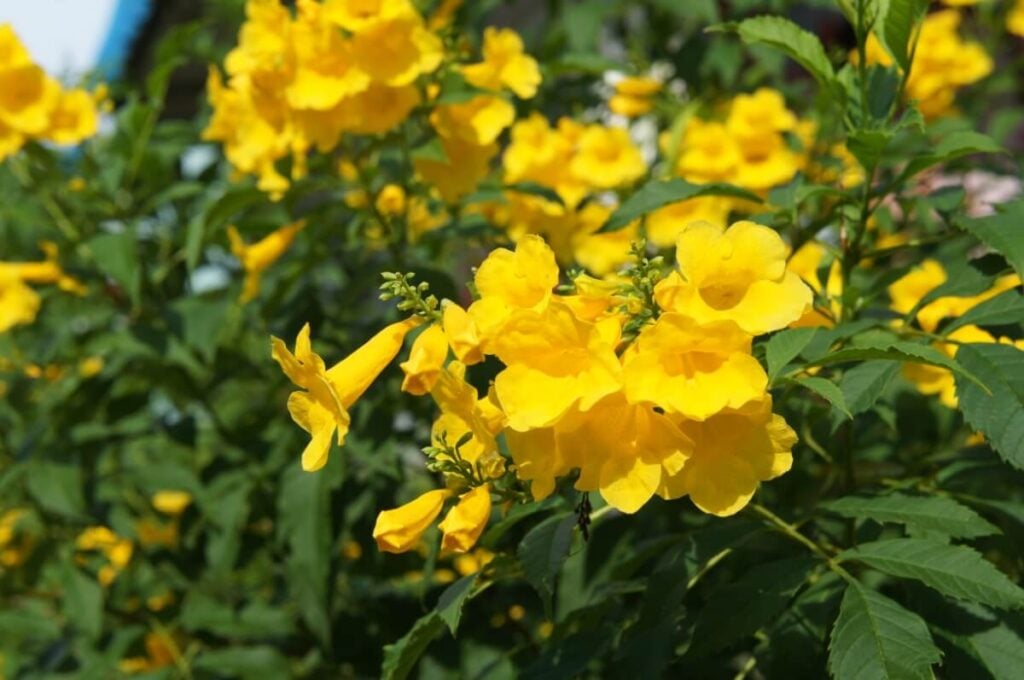
About:
Yellow bells plants are perennial semi-evergreen shrubs from the trumpet-vine family. These trees inhabit parts of South America and the Southern US. Specimens found in Arizona are more drought-tolerant than those from elsewhere.
Tecoma stans trees have pinnate leaves divided into several leaflets with serrated margins. From spring until fall, these trees have clusters of bright yellow trumpet-shaped flowers.
49) Yellow Desert Evening Primrose (Oenothera primiveris)
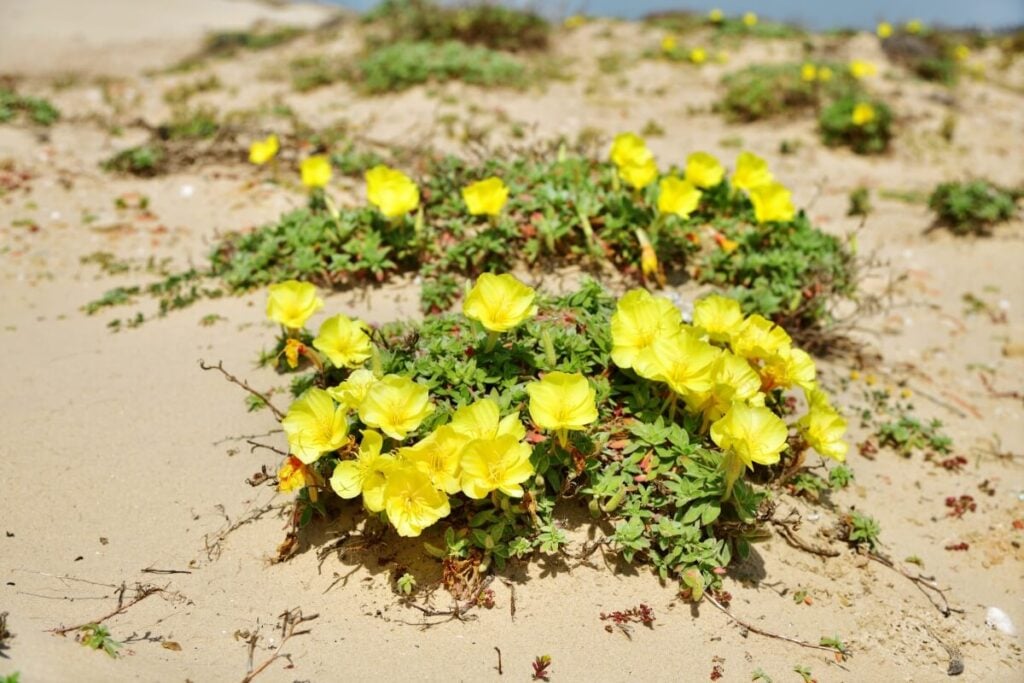
About:
Yellow desert evening primroses are some of Arizona’s most striking types of annual wildflowers. These primroses have hairy grayish-green leaves with crinkled margins.
From late winter until early summer, large yellow flowers emerge above the foliage. These bright blooms gradually turn orange and red as they age. Like most evening primroses, the flowers open during the evening and close in the morning.
50) Yellow Monkeyflower (Mimulus guttatus)

About:
Although they take various forms, all yellow monkeyflower plants have gorgeous bright yellow flowers. These flowers have two upper lobes and three lower lobes along with red spots towards the throat. Yellow monkeyflowers bloom from spring until early fall.
Mimulus guttatus flowers come from the lopseed family (Phrymaceae). These wildflowers usually have coarse oval-shaped leaves. Yellow monkeyflowers are found throughout most of the United States.
Wrapping Up
As we can see, Arizona is home to several gorgeous native wildflowers. Many of these wildflowers are drought-tolerant, making them ideal for dry gardens, rock gardens, and xeriscape gardens. However, the most famous flowers in Arizona are cactus blooms like those of the Arizona queen-of-the-night or the saguaro cactus.
Edd is a budding content writer and gardener living in the United Kingdom. He has a bachelor's degree in Creative and Professional Writing and has written for several gardening publications online. He is passionate about nature and sustainability with a focus on gardening and wildlife.

